-
Home
-
Contributors
-
International
-
Account
-
Information
Filters
Filters
[*]
[1]
[2]
[3]
[4]
[5]
[6]
[7]
[9]
[A]
[B]
[C]
[D]
[E]
[F]
[G]
[H]
[I]
[J]
[K]
[L]
[M]
[N]
[O]
[P]
[Q]
[R]
[S]
[T]
[U]
[V]
[W]
[X]
[Y]
[Z]
-
3 For 2 Hardware Cell Trays
(2)
-
3 for 2 Onions, Shallots & Garlic
(4)
-
A to C - Vegetable Seeds
(1)
-
A to E - Vegetable Plants
(1)
-
Accessories
(34)
-
Albert Bartlett Seed Potatoes
(1)
-
Allium Bulbs
(10)
-
Annual Flower Seeds A-E
(14)
-
Annual Flower Seeds F-P
(16)
-
Annual Flower Seeds Q-Z
(11)
-
Antirrhinum (Snapdragon) Plants
(1)
-
Antirrhinum (Snapdragon) Seeds
(2)
-
Apple Trees
(26)
-
Apricots & Peaches
(4)
-
Aquatic Pond Planters
(2)
-
Artichoke Plants & Tubers
(3)
-
Artichoke Seeds
(2)
-
Asparagus Crowns
(19)
-
Aster Seeds
(1)
-
Aubergine Plants
(3)
-
Aubergine Seeds
(3)
-
Autumn and Winter Bedding Plants
(5)
-
Autumn Bedding Plants
(16)
-
Autumn Cabbages
(3)
-
Autumn Cropping Seed Potatoes
(1)
-
Autumn Planting Bulbs
(1)
-
Autumn Planting Onions, Shallots and Garlic
(1)
-
Autumn Sowing Vegetable Seeds
(13)
-
Bacopa Plants
(1)
-
Bare Root Bedding
(1)
-
Bare Root Bedding Offers
(2)
-
Bare Root Bedding Plants
(4)
-
Bare Root Bush Roses
(23)
-
Bare Root Patio Roses
(7)
-
Bare Root Perennials
(32)
-
Bare Root Roses
(45)
-
Bare Root Roses: Buy 2 get 1 FREE
(1)
-
Baskets & Containers
(2)
-
Bean Plants
(1)
-
Bedding Plants for Spring and Summer
(12)
-
Bedding Special Offers
(2)
-
Beetroot Seeds
(12)
-
Begonia Plants
(6)
-
Begonia Tubers
(1)
-
Begonias
(8)
-
Berry Plants
(12)
-
Best of Chelsea 2016
(1)
-
Bird Feeders For Seed Mixes
(1)
-
Bird Feeders For Straight Seeds
(1)
-
Bird Food & Accessories
(61)
-
Blackberry Plants
(8)
-
Blackberry Reuben Offer
(2)
-
Blueberry Bushes
(10)
-
Brassica Offers and Collections
(2)
-
Broad Bean Plants
(1)
-
Broad Bean Seeds
(6)
-
Broccoli & Calabrese Seeds
(15)
-
Broccoli Plants
(12)
-
Brussels Sprout Plants
(1)
-
Brussels Sprout Seeds
(13)
-
Bulb Value Pack Offers
(1)
-
Bulbs for Indoor Planting
(4)
-
Busy Lizzie (Impatiens) Seeds
(1)
-
Buy any 2 packs of Bedding, Save
(2)
-
Cabbage Plants
(8)
-
Cabbage Seeds
(11)
-
Calendula Seeds
(2)
-
Calibrachoa Plants
(2)
-
Campanula Plants
(1)
-
Canna lilies Rhizomes
(5)
-
Canna Rhizomes
(3)
-
Carrot Seeds
(24)
-
Cauliflower Plants
(8)
-
Cauliflower Seeds
(11)
-
Celeriac Plants
(1)
-
Celeriac Seeds
(1)
-
Celery Plants
(2)
-
Celery Seeds
(3)
-
Chard Seeds
(1)
-
Cherry Trees
(4)
-
Chicory Seeds
(1)
-
Chilli & Pepper Plants
(3)
-
Chilli Plants
(24)
-
Chilli Seeds
(8)
-
Christmas Clearance
(2)
-
Christmas Gifts
(17)
-
Christmas Gifts for Her
(1)
-
Christmas Gifts for the Garden
(1)
-
Christmas Gifts for Under Ten Pounds
(1)
-
Chrysanthemum Plants
(45)
-
CLEARANCE Bulbs
(2)
-
Clematis Plants
(20)
-
Climbing Plants
(3)
-
Coldframes and Grow-Houses
(13)
-
Colour Themed Basket And Container Collection
(3)
-
Compost
(48)
-
Cosmos Seeds
(2)
-
Courgette Plants
(5)
-
Courgette Seeds
(10)
-
Cress Seeds
(4)
-
Crocus Bulbs
(10)
-
Cucumber Plants
(4)
-
Cucumber Seeds
(8)
-
Currant Bushes
(8)
-
Daffodil and Narcissus Indoor Bulbs
(1)
-
Daffodil bulbs
(18)
-
Dahlia Tubers
(35)
-
Digitalis (Foxglove) Plants
(4)
-
Early Varieties
(3)
-
EcoSure Pond Clear
(2)
-
Extra Early Brassicas
(1)
-
Fast Growing Oriental Vegetable Seeds
(9)
-
Fennel Seeds
(1)
-
Fertiliser & Manures
(46)
-
Fertilisers & Controls
(2)
-
Fertilisers, Feed & Manures
(18)
-
Fig Trees
(3)
-
First Early Seed Potatoes
(14)
-
Fish Care Accessories
(2)
-
Fleece & Netting
(4)
-
FloPro Watering Range
(7)
-
Flower Bulbs
(22)
-
Flower Bulbs and Plants
(1)
-
Flower Plants
(75)
-
Flower Seeds
(45)
-
Flowers
(3)
-
Flowers for Pollinators
(7)
-
French Bean Plants
(6)
-
French Beans - Climbing
(6)
-
French Beans - Dwarf
(12)
-
Fruit Cages
(3)
-
Fruit Collections
(1)
-
Fruit Growing Sundries
(3)
-
Fruit Plants & Bushes
(10)
-
Fruit Plants / Soft Fruit
(3)
-
Fruit Trees
(2)
-
Fuchsia Plants
(13)
-
Gaillardia
(4)
-
Gaillardia Plants
(1)
-
Garden & Pest Control
(13)
-
Garden Accessories
(43)
-
Garden Care
(10)
-
Garden Equipment
(39)
-
Garden Furniture
(21)
-
Garden Furniture Range
(1)
-
Garden Gift Ideas
(3)
-
Garden Hand Tools
(28)
-
Garden Ornaments
(14)
-
Garden Power Tools
(60)
-
Garden Tools
(22)
-
Gardening Accessories
(165)
-
Gardening Gift Ideas
(7)
-
Gardening Gloves
(1)
-
Garlic - Autumn Planting
(6)
-
Garlic Bulbs
(5)
-
Garlic Bulbs - Spring Planting
(3)
-
Garlic, Shallots and Onions
(28)
-
Gazebos & Marquees
(3)
-
Geranium Plants
(10)
-
Gifts for Her
(5)
-
Gifts for the Garden
(5)
-
Gladioli Corms
(2)
-
Gooseberry Bushes
(9)
-
Gourmet Vegetable Plants
(2)
-
Gourmet Vegetables
(2)
-
Grafted Tomatoes
(1)
-
Grafted Vegetables
(5)
-
Grape Vines
(8)
-
Green Manure Seeds
(10)
-
Greenhouse Accessories
(5)
-
Greenhouses
(10)
-
Greenhouses & Accessories
(24)
-
Greenhouses and Accessories
(7)
-
Gro-Bed and Seed Collections
(1)
-
Gro-Beds & Gro-Sacks
(1)
-
Gro-Sack Potato Refills
(1)
-
Grow Delicious French Beans
(3)
-
Grow Runner Beans
(1)
-
Grow Sweet Pea Seeds
(16)
-
Grow Sweet Peas
(3)
-
Grow Your Own Asparagus!
(1)
-
Growing Annual Flower Seeds
(135)
-
Growing Flower Bulbs
(106)
-
Growing Flower Plants
(192)
-
Growing Flower Seeds
(48)
-
Growing Flower Seeds & Plants
(150)
-
Growing Fruit Plants
(19)
-
Growing Fruit Trees
(23)
-
Growing Fruit Trees and Plants
(1)
-
Growing Seed Collections
(22)
-
Growing Shrubs, Trees & Hedging
(54)
-
Growing Vegetable Plants
(26)
-
Growing Vegetable Plants & Root vegetables
(68)
-
Growing Vegetable Seeds
(79)
-
Half-Standard Bay Trees
(2)
-
Hand Tools
(12)
-
Hanging Basket, Container & Border Plants
(19)
-
Hardware & Sundries
(10)
-
Hardware Special Offers
(2)
-
Heat Prepared
(1)
-
Hedging & topiary
(10)
-
Herb Plants
(39)
-
Herb Seeds
(17)
-
Hyacinth Bulbs
(9)
-
Indoor & Outdoor Varieties
(6)
-
Indoor Varieties
(8)
-
Iris bulbs
(9)
-
Irrigation & Watering
(27)
-
Kale Seeds
(2)
-
Kohl Rabi Seeds
(2)
-
Lavender Plants
(1)
-
Lavender Seeds
(1)
-
Lavender Shades
(3)
-
Lawn Care
(34)
-
Lawn Mowers
(10)
-
Leek Plants
(4)
-
Leek Seeds
(8)
-
Lettuce Seeds
(14)
-
Lily Bulbs
(12)
-
Lily of the Valley
(1)
-
Liquid Fertilisers & Plant Foods
(8)
-
Lobelia Seeds
(2)
-
Long Cropping Raspberries
(2)
-
Magazine Offers
(3)
-
Magazines and Books
(2)
-
Main Crop Seed Potatoes
(16)
-
Main Crop Varieties
(4)
-
Maincrop Seed Potatoes
(11)
-
Mangetout, Petit Pois, Snap
(5)
-
Marguerite Plants
(3)
-
Marigold Plants
(3)
-
Marigold Seeds
(3)
-
Marrow Seeds
(2)
-
Marshalls Gro-Beds
(2)
-
Marvellous Manure!
(3)
-
Mature shrubs
(50)
-
Mediterranean Trees & Ornamental Bay Trees
(1)
-
Mediterranean Trees and Plants
(2)
-
Melon Plants
(1)
-
Melon Seeds
(1)
-
Micro-Leaf Seeds
(4)
-
Micro-Leaves Seeds
(11)
-
Misted Tips Strawberry Plants
(1)
-
Molluscs
(6)
-
Monarda (Bergamot) Plants
(2)
-
Muscari
(2)
-
Nasturtium Seeds
(3)
-
Nature's Haven Wildflower Seeds
(11)
-
Nemesia Plants
(3)
-
Netting & Protection
(16)
-
New category
(2)
-
NEW Hellebores - Buy 2 get 1 FREE
(1)
-
NEW Windowsill Propagator
(3)
-
Nut Trees
(4)
-
Old Elm House Range
(4)
-
Onion Plants
(3)
-
Onion Seeds
(5)
-
Onion Sets
(14)
-
Onion, Shallot & Garlic Offers
(1)
-
Onions, Shallots & Garlic
(12)
-
Organic Pest Control
(1)
-
Oriental Veg Seeds
(3)
-
Ornamental Trees
(32)
-
Osteospermum Plants
(4)
-
Outdoor Living
(7)
-
Outdoor Plants
(6)
-
Outdoor Storage
(19)
-
Outdoor Varieties
(6)
-
Oxygenating Pond Plants
(3)
-
P to Z - Vegetable Seeds
(1)
-
Pak Choi Seeds
(1)
-
Pansy Plants
(1)
-
Pansy Seeds
(2)
-
Parsnip Seeds
(10)
-
Patio Cleaner
(1)
-
Patio Clematis
(3)
-
Patio Fruit Plants
(1)
-
Patio Fruit Trees
(4)
-
Pea Seeds
(6)
-
Pear Trees
(5)
-
Pepper Plants
(4)
-
Pepper Seeds
(14)
-
Perennial Flower Seeds
(35)
-
Perennial Flower Seeds A-E
(5)
-
Perennial Flower Seeds F-P
(5)
-
Perennial Plants
(42)
-
Perennial Young Plants
(1)
-
Perennials
(19)
-
Pest & Disease Control
(3)
-
Pest Deterrents
(3)
-
Petunia Plants
(26)
-
Petunia Seeds
(6)
-
Pink on Cream
(1)
-
Plant Collections
(4)
-
Plant Protection
(8)
-
Plant Supports
(14)
-
Planters & Containers
(38)
-
Play Houses
(6)
-
Plum & Gage Trees
(11)
-
Plum & Greengage Trees
(1)
-
Pollinator Friendly Plants
(2)
-
Pond Care
(45)
-
Pond Care Accessories
(10)
-
Pond Plants
(90)
-
Potato Growing Bags
(3)
-
Potato Growing Kits
(10)
-
Potato Offers
(1)
-
Potato Saver Collections
(6)
-
Potato Sundries
(4)
-
Potatoes Onions Garlic
(6)
-
Pots & Trays
(1)
-
Pots, Trays & Labels
(4)
-
Potted Bush Roses
(9)
-
Potted Climbing Roses
(3)
-
Potted Patio Roses
(2)
-
Potted Roses
(26)
-
Potting & Propagation
(14)
-
Primrose & Polyanthus Plants
(8)
-
Propagators
(7)
-
Propagators & Heaters
(1)
-
Pumpkin & Squash Seeds
(16)
-
Quick Grow Lettuces and Salad Leaves Seeds
(5)
-
Radish Seeds
(5)
-
Raised Bed Kits
(3)
-
Raised Beds & Accessories
(25)
-
Raspberry Canes
(35)
-
Raspberry Glen Coe
(1)
-
Red Cabbages
(3)
-
Regular - Autumn Planting
(1)
-
Rhubarb Crowns
(12)
-
Rocket Seeds
(2)
-
Roses
(3)
-
Rudbeckia Plants
(4)
-
Rudbeckia Seeds
(2)
-
Runner Bean Plants
(2)
-
Runner Bean Seeds
(12)
-
Salad Leaf Plants
(1)
-
Salad Leaf Seeds
(2)
-
Salad Seed Potatoes
(4)
-
Salvia Plants
(6)
-
Savoy Cabbages
(3)
-
Second Early Seed Potatoes
(12)
-
Seed Collections With FREE Propagator
(2)
-
Seed mixes
(7)
-
Seed Potatoes
(33)
-
Seed Potatoes Buy 2 Get 1 Free
(5)
-
Shallot Bulbs
(1)
-
Shallot Sets
(6)
-
Shed Essentials
(2)
-
Sheds
(11)
-
Shrubs
(17)
-
Snowdrop Bulbs
(1)
-
Soft Fruit / Fruit Plants
(31)
-
Special Offers
(5)
-
Special Offers Brassica
(1)
-
Special Offers Vegetable Seeds
(2)
-
Speciality Bulbs
(4)
-
Spinach Seeds
(5)
-
Sprayers
(1)
-
Spring Bedding Plants
(7)
-
Spring Bedding: Buy 4 Packs Get The Cheapest FREE
(4)
-
Spring Cabbages
(3)
-
Spring Flowering Bulbs
(73)
-
Spring Flowering Bulbs Value Packs
(3)
-
Spring Onion Seeds
(6)
-
Squash Plants
(1)
-
Standard Bay and Holly Trees
(1)
-
Starter shrubs
(8)
-
Storage & Preserving
(2)
-
Strawberry Elsanta
(1)
-
Strawberry Elsanta Offer
(1)
-
Strawberry Plants
(46)
-
Strawberry Special Offer!
(14)
-
Summer Cabbages
(4)
-
Summer Catalogue Seeds
(3)
-
Summer Flowering Bulbs
(14)
-
Summer Houses
(2)
-
Summer Sowing Quick Grow Vegetable Seeds
(10)
-
Sunflower Seed
(4)
-
Swede Seeds
(2)
-
Sweet Pea Collections
(5)
-
Sweet Pea Plants
(14)
-
Sweet Pea Seeds
(18)
-
Sweet Potato
(4)
-
Sweet William
(1)
-
Sweetcorn Plants
(2)
-
Sweetcorn Seeds
(7)
-
This Seasons Special Offers
(2)
-
Tomato Plants
(29)
-
Tomato Seeds
(22)
-
Top Fruit / Fruit Trees
(9)
-
Trees & Shrubs
(50)
-
Tulip Bulbs
(28)
-
Tulips
(2)
-
Tunnels & Cloches
(7)
-
Turnip Seeds
(6)
-
Twin Fruit Trees
(2)
-
Unwins Seeds
(5)
-
Veg Plant Collections
(2)
-
Vegetable Garden
(16)
-
Vegetable Plant Offers
(1)
-
Vegetable Seed Collections
(1)
-
Vegetable Seeds to Sow this Summer!
(3)
-
Vegetable Starter Plants
(17)
-
VegTrug Planters
(32)
-
Verbena Plants
(7)
-
Wallflower Plants
(6)
-
Water Iris
(1)
-
Water Lilies for Ponds
(2)
-
Weed & Pest Control
(39)
-
Weed Killer
(15)
-
White Shades
(1)
-
Wildflower Plants
(1)
-
Wildflower Seeds
(2)
-
Wildlife & Native Plants
(1)
-
Winter Cabbages
(4)
-
Winter Interest Shrubs
(3)
-
Woodland and Native Bulbs
(6)
-
Woodland Bulbs
(7)
-
Young Flower Plant Offers
(4)
-
Young Plants
(138)
Price: £ - £
Available
-
free Re-usable Planters
For Every Orderwelcome
You Homeimmediate
Impactour Half Standard
Bay Trees Are
Approximately 90cm/3ft
Tall Above The Pot, With
A 28-33cm/11-13in
Diameter Head On A Sturdy
Stem.with Its Definitive
Dark Green ‘lollipop’
Head, Your Pair Of
Half-standard Bay Trees
At Under £30 Each Adds A
Wonderful
Symmetrical formality To
Your Garden,
Particularly When Placed
Either Side Of The Front
Door.your Half-standard
Bay Tree Pair Arrives
With Two Planters Worth
£19.90!as Well As
Looking Great By The
Doorway, You Can Pick
Bay Leaves All Year Round
To Add To Sauces For A
Punchier Flavour!
Beautiful And
Culinary.bay Trees Thrive
In Containers And Are So
Easy To Look After –
Just Clip The Leaves To
Keep A Ball-shape Top
During Summer And Give An
Occasional Liquid Feed
Such As Empathy All
Purpose Liquid Seaweed
Fertiliser.head Size On
Arrival Is Approx. 12in
(30cm) In Diameter.please
Note: Bays Trees Have
Been Clipped For The
Winter As Part Of Healthy
Maintenance and Due To
The Nature Of The Product
And The Transit Process,
The Products May Be Not
Be Identical And The Leaf
Canopy may Not Be As
Established As
The trees pictured.during
The Spring And Summer The
Trees Will Produce New
Leaf Growth And The Leaf
Canopy Will Continue
To get Bigger. planter
Style May Vary.
Available
-
A High Quality Patio Rose
Resembling Sweet Dream In
The Effortless Way It
Grows And Flowers. The
Large Attractive
Creamy-white Flowers Are
Borne In Abundance On A
Strong Growing, Bushy
Plant Of Compact Habit.
It Has Good Disease
Resistance And Is
Suitable For Bedding,
Edging And Containers.
Available
-
With Its Bushy Habit And
Healthy Glossy Foliage
Sweet Dreams Forms A
Positive Cushion Of
Lovely Peachy-apricot
Double Flowers With An
Exquisite Form And A
Sweet Fragrance. The
Flowers Are Produced In
Continuous Profusion
Throughout The Summer.
This Variety Is Extremely
Versatile With A Wide
Variety Of Uses, Great
In A Pot, For Bedding
And Borders They Are Also
Excellent As Edging And
Dwarf Hedges.
Available
-
Vinca Minor, Commonly
Called Lesser Periwinkle,
Is A Scrambling
Evergreen Shrub With Dark
Green Foliage That Is
Studded From Spring To
Autumn With Pale Blue Or
Violet Flowers. Tough And
Fully Hardy This Low
Growing, Easy-care Shrub
Is Excellent For Planting
As Groundcover Under
Shrubs And Trees Or To
Cascade Down Banks. Grow
Vinca Minor In Any
Moderately Fertile,
Moist But Well-drained
Soil In Sun Or
Shade. plantingdig A
Hole Large And Deep
Enough To Take The
Plant’s Root
Ball.gently Tap The Plant
Out Of Its Pot Without
Disturbing The Soil
Around The Roots.position
The Plant In The Hole So
The Plant’s Crown Is
Level With The Surface
And Sits At The Same
Depth As It Was In The
Pot; Make Sure The Roots
Are In Direct Contact
With The Soil.backfill
With The Excavated Soil
And Firm In Gently.water
To Settle The Soil Around
The
Roots. aftercare.watering:
Water Regularly In The
First Few Weeks After
Planting But Don’t
Overwater. The Plants
Will Send Their Roots
Down In Search Of
Moisture As They
Grow.feeding: Give
Plants A Boost If
Necessary With A Handful
Of Granular Feed Hoed
Into The Soil In
Spring.pruning: Prune
Out Unwanted Stems In
Spring To Keep The Shrubs
Manageable.
Available
-
Mahonia X Media
‘charity’ Is A
Popular Variety Of This
Architectural Evergreen.
From November Through To
March It Produces Long
Spikes Of Lightly Scented
Yellow Flowers Which Are
Much Appreciated During A
Season Where Few Other
Plants Are In Flower. The
Foliage Is Very Dramatic,
Large, Dark Green And
Similar In Appearance To
Holly. Mahonia X Media
‘charity’ Is A
Valuable Plant For
Pollinating Insects,
Providing A Source Of
Nectar Insects During
Winter. The Flowers Are
Followed By Ornamental
Purple/blue Berries That
Attract Birds To Your
Garden. ‘charity’ Is
A Lovely Variety Of
Mahonia, Creating A
Focal Point In A Shady
Border Or Woodland Garden
But Will Tolerate Sun If
The Soil Is Kept Moist. A
Plant That Truly Provides
All Year Round
Interest.plantingdig A
Hole Large And Deep
Enough To Take The
Plant’s Root
Ball.gently Tap The Plant
Out Of Its Pot Without
Disturbing The Soil
Around The Roots.position
The Plant In The Hole So
The Plant’s Crown Is
Level With The Surface
And Sits At The Same
Depth As It Was In The
Pot; Make Sure The Roots
Are In Direct Contact
With The Soil.backfill
With The Excavated Soil
And Firm In Gently.water
To Settle The Soil Around
The Roots. watering:
Water Regularly In The
First Few Weeks After
Planting But Don’t
Overwater. The Plants
Will Send Their Roots
Down In Search Of
Moisture As They
Grow.feeding: Give
Plants A Boost If
Necessary With A Handful
Of Granular Feed Hoed
Into The Soil In
Spring.pruning: Mahonia
X Media Charity Needs No
Regular Pruning.on
Established Plants Remove
Some Of The Old Stems And
Cut Back If Necessary To
Rejuvenate Leggy
Mahonias. The Cut Stems
Are Bright Yellow, Which
Can Sometimes Come As A
Shock When You First Cut
Into Them!
Available
-
Ribes Sanguineum ‘king
Edward Vii’ Is Commonly
Called Winter Or
Flowering Currant.
‘king Edward Vii’ Is
An Aromatic Shrub With
Clusters Of Deep
Crimson-red Flowers In
Spring. After Flowering
The Showy Flowers Give
Way To Clusters Of
Decorative Fruits. These
Ornamental Hardy Shrubs
Flower At The Same Time
As Forsythias And They
Are Good Planting
Partners For Other Early
Spring Flowering Shrub;
Either As Specimen Shrubs
In A Mixed Border Or As
Part Of An Ornamental
Hedge. Flowering Currants
Are Excellent Shrubs For
Attracting Birds And
Insects To The Garden.
Grow Ribes Sanguineum
‘king Edward Vii’ In
Any Moderately Fertile,
Moist But Well-drained
Soil. These Easy-care
Shrubs Are Tolerant Of
Most Soils And
Positions. plantingdig A
Hole Large And Deep
Enough To Take The
Plant’s Root
Ball.gently Tap The Plant
Out Of Its Pot Without
Disturbing The Soil
Around The Roots.position
The Plant In The Hole So
The Plant’s Crown Is
Level With The Surface
And Sits At The Same
Depth As It Was In The
Pot; Make Sure The Roots
Are In Direct Contact
With The Soil.backfill
With The Excavated Soil
And Firm In Gently.water
To Settle The Soil Around
The
Roots. aftercare.watering:
Water Regularly In The
First Few Weeks After
Planting But Don’t
Overwater. The Plants
Will Send Their Roots
Down In Search Of
Moisture As They
Grow.feeding: Give
Plants A Boost If
Necessary With A Handful
Of Granular Feed Hoed
Into The Soil In
Spring.pruning: Prune
Flowering Currants
Immediately After
Flowering. On
Established Plants,
Cut Flowering Stems Back
To Young Shoots Low Down
On The Plant To Encourage
More Flowers And To Keep
The Shrubs Neat.
Available
-
Few Plants Can Add A
Dimension To A Garden
Like A True English Rose
And For A Variety To Be
Given The Accolade
‘rose Of The Year’
You Know It Must Display
Exceptional Qualities. It
Will Have Been Through
Vigorous And Independent
Trials In Different Areas
Of The Uk Over A Two Year
Period Where New
(unnamed) Varieties Are
Assessed For Qualities
Such As Health, Novelty,
Scent And Overall Good
Looks. So If You Are
Looking For Roses With
Superb Breeding And
Excellent Garden
Performance Then This Is
The Collection For
You.they Are All
Floribundas – Having
Many Roses Per Stem –
And Will Flower For You
All Summer Long. Rose Of
The Year 2010 And Is Also
A Gold Standard Winner.
It Is A Yellow Floribunda
Rose With A Distinctive
Fragrance - A Combination
Of Sweetness And
Liquorice. Buttery-yellow
Blooms Open In A Many
Petalled, Nicely Ruffled
Old-fashioned Style. It
Is Perfect For A Summer
Border Or Large
Container, And Will Add
A Subtle Scent To Any
Room.
Available
-
This Beautiful Repeat
Flowering Floribunda Has
Flowers Of A Form And
Size More Synonymous With
A Hybrid Tea Rose! The
Striking Blooms Are
Yellow Edged With Red And
Are Very Fragrant, They
Are Borne Singly And In
Clusters On Strong Short
Stems. Plants Are Free
Branching With Glossy
Dark Foliage Good Disease
Resistance.
Available
-
Malus Pink Perfection Is
A Densely Branched Crab
Apple Tree That Is
Smothered In Pale Pink,
Fragrant Blossom In
Spring. This Is A Very
Ornamental Crab Apple
Tree, Excellent In A
Medium Sized Garden It Is
A Haven For Wildlife,
From Pollinating Insects
In Spring, To Birds Who
Feast On The Crab Apples
In Autumn. In Summer The
Dark Green Foliage Makes
A Dense Leafy
Canopy.malus Pink
Perfection Is Tolerant Of
Pollution And Happy In
Most Soil Types Including
Clay; Crab Apple Trees
Will Thrive In City
Gardens Just Find Them A
Sunny Position To
Encourage The Best
Display Of Blossom.crab
Apple Trees Belong To The
Malus Family, And They
Are Often Good
Pollinators For Domestic
Apple Trees (malus
Domestica). if It Is Not
Possible To Plant Because
Soil Is Waterlogged Or
Frozen Keep The Trees
Somewhere Frost Free And
Airy. Keep The Roots Just
Moist By Storing Them In
Damp Compost Or If
Outside Conditions Allow,
Heel The Trees In To A
Patch Of Bare Ground
Until You’re Ready To
Plant Them Into Their
Permanent
Positions.rootstock:
Mm111flowering Group:
Self-fertileyears Until
Fruiting From Planting:
2-4age Of Tree At
Despatch: 2height At Full
Growth: 5m/16ftmost Of
Our Trees Are Delivered
As Bare Rooted Specimens
With Approximate Height
Of: 3.5ft - 5ft / 105cm -
140cm Depending On The
Variety.in Order To
Ensure A Good Pollination
Pick Fruit Trees From
Within The Same Or From
Adjacent Flowering
Groups.the Vast Majority
Of The Trees We Ship Have
Been Pruned And Will
Appear Trimmed.
Available
-
A Delightful And Elegant
Myrrh-scented Rose,
Young Buds Have A Subtle
Light Lime Green Tint,
Petals Reflex As They
Open To Reveal Blooms Of
Glowing Amber In The
Style Of Old Roses.an
Exceptional Rose Both For
The Garden And For
Cutting, The Clusters Of
Flowers Open
Progressively Providing
Long Lasting Interest.
The Plants Are Upright
With Sturdy Stems And Are
Suitable For Beds And
Summer Borders Either As
A Single Specimen Or In
Groups It Is Also Ideal
To Grow In Containers.
Available
-
Cotoneaster × Suecicus
‘coral Beauty’ Is A
Fantastic Choice For An
Attractive, Weed
Suppressing,
Carpet-forming Plant.
Once Mature It Creates A
Dense Low, Growing,
Evergreen Shrub Which
Produces A Profusion Of
Tiny White Flowers During
Spring And Summer Which
Are Followed By Masses Of
Coral Red Berries, Which
Attract Birds.
Cotoneaster ‘coral
Beauty’ Is One Of The
Best Evergreen Berry
Shrubs, Rivalling
Viburnums And Even
Pyracantha.plantingdig A
Hole Large And Deep
Enough To Take The
Plant’s Root
Ball.gently Tap The Plant
Out Of Its Pot Without
Disturbing The Soil
Around The Roots.position
The Plant In The Hole So
The Plant’s Crown Is
Level With The Surface
And Sits At The Same
Depth As It Was In The
Pot; Make Sure The Roots
Are In Direct Contact
With The Soil.backfill
With The Excavated Soil
And Firm In Gently.water
To Settle The Soil Around
The
Roots. aftercare.watering:
Water Regularly In The
First Few Weeks After
Planting But Don’t
Overwater. The Plants
Will Send Their Roots
Down In Search Of
Moisture As They
Grow.feeding: Give
Plants A Boost If
Necessary With A Handful
Of Granular Feed Hoed
Into The Soil In
Spring.pruning: none
Needed, But On
Established Plants Remove
Crossing Stems To Keep
Plants Neat,
Available
-
Privet or Ligustrum
Ovalifolium, Is A
Classic Hedge Choice And
Thrives In Sun Or Shade,
Is Fast Growing And
Provides Dense Cover. If
Kept Pruned As A Hedge It
Is Unlikely To Flower.
Normally Evergreen But
May Loose Some Foliage
Leaves In Very Cold
Winters. flowers:
Julyheight: 9ft/3m If
Unprunned.hedges Within
Gardens Create A Softer,
More Wildlife Friendly
Boundary And Can Provide
A Great Seasonal Display
Of Flowers, Berries And
Autumn Colour.even A
Small Hedge Can Create
Your Own Little Wildlife
Habitat. They Can Be
Close Clipped Or Left A
Bit Wilder, A Mix Of
Native Varieties Will
Give Different Periods Of
Interest And A Good
Nesting And Winter Food
Source For Birds.planting
Distances Vary From
30-60cm/1-2ft Depending
On The Variety And The
Size Of Hedge
Required.for A Denser
Hedge Plant A Staggered
Double Row With 38cm/15in
Between Rows And
45cm/18ins Between
Plants. All Our Hedging
Will Be Delivered As Bare
Rooted Bundles, With
Approximate Height Of Up
To 100cm/3.5ft Depending
On The Variety.
Available
-
Flowering Cherry Accolade
Is A Good Choice For A
Small Garden; It’s A
Small Spreading
Ornamental Tree With
Large, Semi-double,
Pink Flowers That Open
From Darker Buds And
Smother The Tree With
Blossom In Spring. In
Autumn The Mid-green
Leaves Turn Bright Orange
Before They Fall. Give
This Tree The Sunniest
Spot In The Garden To
Encourage The Best
Blossom Display.although
Flowering Cherry Trees
Are Related To The Edible
Cherries (they Are All
Members Of The Prunus
Family) These Ornamental
Cherry Trees Are Grown
For Their Spring Blossom
And Good Autumn Colour.
Many Also Have Attractive
Satiny Bark, So The
Trees Remain Interesting
All Through The Year.if
It Is Not Possible To
Plant Because Soil Is
Waterlogged Or Frozen
Keep The Trees Somewhere
Frost Free And Airy. Keep
The Roots Just Moist By
Storing Them In Damp
Compost Or If Outside
Conditions Allow, Heel
The Trees In To A Patch
Of Bare Ground Until
You’re Ready To Plant
Them Into Their Permanent
Positions.rootstock:
Coltflowering Group:
Self-fertileage Of Tree
At Despatch: 2height At
Full Growth: 8m/26ftmost
Of Our Trees Are
Delivered As Bare Rooted
Specimens With
Approximate Height Of:
3.5ft - 5ft / 105cm -
140cm Depending On The
Variety.in Order To
Ensure A Good Pollination
Pick Fruit Trees From
Within The Same Or From
Adjacent Flowering
Groups.the Vast Majority
Of The Trees We Ship Have
Been Pruned And Will
Appear Trimmed.
Available
-
Hypericum Calycinum;
Commonly Called St
John’s Wort Or Rose Of
Sharon, These Summer
Flowering, Evergreen
Shrubs Bear Golden
Flowers With Showy
Stamens Amid Large, Oval
Deep Green Leaves. The
Flowers Give Way To
Clusters Of Autumn And
Winter Berries That Look
Good In Floral
Arrangements. Despite
Their Exotic Looks
Hypericum Calycinum Are
Easy To Grow And They Are
Ideal Spreading Shrubs To
Give Low Maintenance,
Weed-suppressing Ground
Cover, Especially. grow
Hypericum Calycinum In
Full Sun Or Partial Shade
In Moist, But Well
Drained
Soil. plantingdig A Hole
Large And Deep Enough To
Take The Plant’s Root
Ball.gently Tap The Plant
Out Of Its Pot Without
Disturbing The Soil
Around The Roots.position
The Plant In The Hole So
The Plant’s Crown Is
Level With The Surface
And Sits At The Same
Depth As It Was In The
Pot; Make Sure The Roots
Are In Direct Contact
With The Soil.backfill
With The Excavated Soil
And Firm In Gently.water
To Settle The Soil Around
The
Roots. aftercare.watering:
Water Regularly In The
First Few Weeks After
Planting But Don’t
Overwater. The Plants
Will Send Their Roots
Down In Search Of
Moisture As They
Grow.feeding: Give
Plants A Boost If
Necessary With A Handful
Of Granular Feed Hoed
Into The Soil In
Spring.pruning: Keep
Hypericum Calycinum Neat
By Shearing Over The
Shrub In Spring.
Available
-
The Tulip Tree
(liriodendron Tulipifera)
Is Definitely A Tree To
Plant For The Long Term.
The Allure Of A Tree With
Tulip-like Flowers Is
Strong; Even Though It
Can Take 20 Years Before
The Large Green And
Orange Tulip-shaped
Flowers Appear They Are
Worth The Wait! But There
Are Plenty Of Other
Reasons To Grow This
Ornamental Tree.when The
Tree Is Young, The
Distinctively Shaped,
Glossy Leaves Are The
Tulip Tree’s Main
Attraction; They Open
Bright Green Before
Turning Brilliant Yellow
In Autumn.liriodendron
Tulipifera Is An Ancient
Species Of Tree That
Belongs To The Same Plant
Family As Magnolias. This
Tree Grows Fast, And
Eventually Becomes Very
Large, So Site It With
Care.if It Is Not
Possible To Plant Because
Soil Is Waterlogged Or
Frozen Keep The Trees
Somewhere Frost Free And
Airy. Keep The Roots Just
Moist By Storing Them In
Damp Compost Or If
Outside Conditions Allow,
Heel The Trees In To A
Patch Of Bare Ground
Until You’re Ready To
Plant Them Into Their
Permanent
Positions.rootstock: Its
Ownage Of Tree At
Despatch: 2height At Full
Growth: 30m/100ftmost Of
Our Trees Are Delivered
As Bare Rooted Specimens
With Approximate Height
Of: 3.5ft - 5ft / 105cm -
140cm Depending On The
Variety.in Order To
Ensure A Good Pollination
Pick Fruit Trees From
Within The Same Or From
Adjacent Flowering
Groups.the Vast Majority
Of The Trees We Ship Have
Been Pruned And Will
Appear Trimmed.
Available
-
Genista Lydia, Like
Dwarf Genistas, Is A
Very Popular Variety.
This Exceptional Shrub
Has A Lovely Rounded Form
And In Late Spring And
Early Summer It Produces
A Profusion Of Yellow
Flowers, Literally
Covering The Plant To
Create A Vibrant Golden
Coloured Dome. Genista
Lydia Is A Common Sight
On The Dry, Sunny
Hillsides Of Southern
France And Spain,
Thriving On Poor Quality
Soils. Plant Yours In
Poorly Fertile Soil To
Achieve The Most Flowers.
Genista Lydia Is An Rhs
Agm Winner And A Great
Plant For A Large
Rockery.plantingdig A
Hole Large And Deep
Enough To Take The
Plant’s Root
Ball.gently Tap The Plant
Out Of Its Pot Without
Disturbing The Soil
Around The Roots.position
The Plant In The Hole So
The Plant’s Crown Is
Level With The Surface
And Sits At The Same
Depth As It Was In The
Pot; Make Sure The Roots
Are In Direct Contact
With The Soil.backfill
With The Excavated Soil
And Firm In Gently.water
To Settle The Soil Around
The
Roots. aftercare.watering:
Water Regularly In The
First Few Weeks After
Planting But Don’t
Overwater. The Plants
Will Send Their Roots
Down In Search Of
Moisture As They
Grow.feeding: Give
Plants A Boost If
Necessary With A Handful
Of Granular Feed Hoed
Into The Soil In
Spring.pruning: Trim
Genista Lydia Lightly
After Flowering But
Don’t Cut Into Old
Wood.
Available
-
Lavatera Collection, 3
Colours From Deep
Red-pink To Rose Pink And
Pearl Pink, This
Lavatera Collection Will
Keep The Garden Colourful
All Summer.save £10.00
With This
Collection.lavatera Olbia
Rosea Agmthe Deep Pink
Flowers On This Vigorous
Spreading Tree Mallow
Appear In Profusion And
Bloom For A Long Time
Amid Bright Green Leaves.
Lavatera Olbia
‘rosea’ Has Been
Awarded The Rhs Award Of
Garden Merit (agm) As An
Outstanding Garden
Plant.lavatera
Barnsleythis
Free-flowering Vigorous
Lavatera Has Large,
Single Blooms On Arching
Stems. The Flowers
Resemble Hollyhocks; They
Open Palest Pink And Fade
To Deeper Pink And Each
Flower Has A Deep Pink
Centre And Prominent
Stamens.lavatera burgundy
Winethis Attractive Tall
Mallow Plant Keeps Some
Of Its Leaves Throughout
The Winter. It Grows Tall
To Add Welcome Height And
Interest To Your Garden
In The Height Of Summer.
It Works So Well In Your
Garden That The Royal
Horticultural Society Has
Given It An Award For
Great Performance And
Reliability.aftercare
Prune Established Plants
Hard In Spring To Within
45cm Of Soil Level To
Encourage Plenty Of Bushy
New Growth.
Available
-
Potentilla Fruticosa
‘red Ace’ Makes A
Twiggy, Bushy Shrub With
Small Grey Green Leaves;
This Compact Deciduous
Shrub Is Studded With
Yellow-backed Red Flowers
From Late Spring To Early
Summer. The Flowers Tend
To Fade To Orange In Hot
Sun To Give A Lovely Two
Tone Effect. Commonly
Known As Shrubby
Cinquefoil, Potentillas
Are Hardy Shrubs That Are
Easy To Grow And Care
For. Grow Potentilla In
Any Moderately Fertile,
Moist But Well-drained
Soil. These Easy-care
Shrubs Are Tolerant Of
Most Soils And
Positions. plantingdig A
Hole Large And Deep
Enough To Take The
Plant’s Root
Ball.gently Tap The Plant
Out Of Its Pot Without
Disturbing The Soil
Around The Roots.position
The Plant In The Hole So
The Plant’s Crown Is
Level With The Surface
And Sits At The Same
Depth As It Was In The
Pot; Make Sure The Roots
Are In Direct Contact
With The Soil.backfill
With The Excavated Soil
And Firm In Gently.water
To Settle The Soil Around
The
Roots. aftercare.watering:
Water Regularly In The
First Few Weeks After
Planting But Don’t
Overwater. The Plants
Will Send Their Roots
Down In Search Of
Moisture As They
Grow.feeding: Give
Plants A Boost If
Necessary With A Handful
Of Granular Feed Hoed
Into The Soil In
Spring.pruning: No
Regular Pruning Necessary
But Potentilla Can Be
Trimmed To Shape After
Flowering To Keep The
Shrubs Neat.
Available
-
Lavatera Barnsley Is A
Free-flowering Vigorous
Lavatera That Has Large,
Single Blooms On Arching
Stems.the Flowers
Resemble Hollyhocks; They
Open Palest Pink And Fade
To Deeper Pink And Each
Flower Has A Deep Pink
Centre And Prominent
Stamens.delivered As Well
Grown Plants In 3 Litre
Pots, They Are Ready To
Plant Into Well-drained
Soil In Beds And
Borders.after
Care remove The Faded
Blooms To Prolong The
Display.keep Plants Neat
By Pruning Stems In
Spring.flowers
July-septheight Up To
1.2m/4ft.
Available
-
Potentilla Fruticosa
‘tangerine’ Makes A
Twiggy, Spreading Shrub
With Small Grey Green
Leaves; This Dwarf
Potentilla Is Studded
With Yellow-orange
Flowers From Late Spring
To Early Summer. The
Flowers Tend To Fade To
Yellow In Hot Weather To
Give A Lovely Two Tone
Effect. Commonly Known As
Shrubby Cinquefoil;
Potentillas Are Hardy
Shrubs That Are Easy To
Grow And Care For. Grow
Potentilla In Any
Moderately Fertile,
Moist But Well-drained
Soil. These Easy-care
Shrubs Are Tolerant Of
Most Soils And
Positions. plantingdig A
Hole Large And Deep
Enough To Take The
Plant’s Root
Ball.gently Tap The Plant
Out Of Its Pot Without
Disturbing The Soil
Around The Roots.position
The Plant In The Hole So
The Plant’s Crown Is
Level With The Surface
And Sits At The Same
Depth As It Was In The
Pot; Make Sure The Roots
Are In Direct Contact
With The Soil.backfill
With The Excavated Soil
And Firm In Gently.water
To Settle The Soil Around
The
Roots. aftercare.watering:
Water Regularly In The
First Few Weeks After
Planting But Don’t
Overwater. The Plants
Will Send Their Roots
Down In Search Of
Moisture As They
Grow.feeding: Give
Plants A Boost If
Necessary With A Handful
Of Granular Feed Hoed
Into The Soil In
Spring.pruning: No
Regular Pruning Necessary
But Potentilla Can Be
Trimmed To Shape After
Flowering To Keep The
Shrubs Neat.
Available
-
Flowering Cherry Tree
Prunus Fragrant Cloud Is
A Beautiful Vase-shaped,
Ornamental Cherry Tree
With Clusters Of Large,
Semi-double Scented
Flowers. The Blossom
Emerges White And Turns
To Pale Pink As It Ages
To Give A Froth Of Very
Fragrant Spring
Flowers. This Flowering
Cherry Tree Also Has Good
Autumn Colour, With The
Foliage Turning Red And
Orange Before It
Falls.prunus Fragrant
Cloud Is Also Known As
Prunus Shizuka And Prunus
Serrulata Taka Nioi.
Described When It Was
Trialled By The Rhs At
Wisley As “the Best
Scented
Cherry”-“exquisite
Flowers."" Prunus
Fragrant Cloud Has Been
Given The Rhs Award Of
Garden Merit As An
Excellent Garden
Tree.although Flowering
Cherry Trees Are Related
To The Edible Cherries
(they Are All Members Of
The Prunus Family) These
Ornamental Cherry Trees
Are Grown For Their
Spring Blossom And Good
Autumn Colour. Many Also
Have Attractive Satiny
Bark, So The Trees
Remain Interesting All
Through The Year.if It Is
Not Possible To Plant
Because Soil Is
Waterlogged Or Frozen
Keep The Trees Somewhere
Frost Free And Airy. Keep
The Roots Just Moist By
Storing Them In Damp
Compost Or If Outside
Conditions Allow, Heel
The Trees In To A Patch
Of Bare Ground Until
You’re Ready To Plant
Them Into Their Permanent
Positions. Prune
Ornamental Cherries In
Summer To Prevent The
Risk Of Silver Leaf
Disease.rootstock:
Coltage Of Tree At
Despatch: 2height At Full
Growth: 6m/20ftmost Of
Our Trees Are Delivered
As Bare Rooted Specimens
With Approximate Height
Of: 3.5ft - 5ft / 105cm -
140cm Depending On The
Variety.in Order To
Ensure A Good Pollination
Pick Fruit Trees From
Within The Same Or From
Adjacent Flowering
Groups.the Vast Majority
Of The Trees We Ship Have
Been Pruned And Will
Appear Trimmed.
Available
-
Betula Nigra Heritage Is
Also Listed Under The
Synonym Betula
‘cully’. It Is A
Vigorous Deciduous Tree
Grown Mainly For Its
Shaggy,
Cinnamon-coloured Peeling
Bark And Good Autumn
Colour.birch Trees Are
Wonderful For Attracting
Wildlife; A Single Birch
Tree Can Support Scores
Of Insects. In Autumn The
Trees’ Soft Green
Diamond-shaped Leaves
Turn To A Shimmering
Golden Yellow Before They
Fall.commonly Known As
River Birch, Betula
Nigra Heritage Is Often
Found Growing On Wet
Soils In Its Native
American Habitat, But
Once Established This
Birch Tree Will Grow Well
In Drier Soils And It Is
Able To Survive Hot
Summers.if It Is Not
Possible To Plant Because
Soil Is Waterlogged Or
Frozen Keep The Trees
Somewhere Frost Free And
Airy. Keep The Roots Just
Moist By Storing Them In
Damp Compost Or If
Outside Conditions Allow,
Heel The Trees In To A
Patch Of Bare Ground
Until You’re Ready To
Plant Them Into Their
Permanent
Positions.rootstock: Its
Ownage Of Tree At
Despatch: 2height At Full
Growth: 12m/40ftmost Of
Our Trees Are Delivered
As Bare Rooted Specimens
With Approximate Height
Of: 3.5ft - 5ft / 105cm -
140cm Depending On The
Variety.in Order To
Ensure A Good Pollination
Pick Fruit Trees From
Within The Same Or From
Adjacent Flowering
Groups.the Vast Majority
Of The Trees We Ship Have
Been Pruned And Will
Appear Trimmed.
Available
-
Buddleja Davidii ‘royal
Red’, Also Known As
The Butterfly Bush,
Produces Spikes Of
Honey-scented, Dark Red,
Almost Purple Flowers,
On Top Of Arching Stems
From Midsummer. These
Flowers Are Loved By
Butterflies And Other
Nectar Feeding Insects
And So Is The Perfect
Choice For A Wildflower
Garden. ‘royal Red’
Is An Excellent Variety
Because It Produces Some
Of The Biggest Flowers Of
All The Davidii Species
Sometime Up To 50cm Long
Especially If Pruned Hard
During Spring. The
Foliage Is Also
Attractive, Turning A
Butter-yellow During
Autumn. A Wonderful
Specimen Plant Which Will
Flower For A Long Period
Of Time If Dead Headed
Regularly.plantingdig A
Hole Large And Deep
Enough To Take The
Plant’s Root
Ball.gently Tap The Plant
Out Of Its Pot Without
Disturbing The Soil
Around The Roots.position
The Plant In The Hole So
The Plant’s Crown Is
Level With The Surface
And Sits At The Same
Depth As It Was In The
Pot; Make Sure The Roots
Are In Direct Contact
With The Soil.backfill
With The Excavated Soil,
Enriched With Humus-rich
Garden Compost And Firm
In Gently.water To Settle
The Soil Around The
Roots. aftercare
Deadhead Spent Flowers To
Encourage More To Take
Their Place.watering:
Water Regularly In The
First Few Weeks After
Planting And Then Make
Sure The Plants Are Kept
Moist In Dry Spell; But
Don’t Overwater.
Plants Will Send Their
Roots Down In Search Of
Moisture As They
Grow.feeding: Give
Plants A Boost If
Necessary With A Handful
Of Granular Feed Hoed
Into The Soil In
Spring.pruning: every
Year In Early Spring
Prune Buddleja Hard Back
To A Strong Bud Low Down
On The Plant. This Will
Keep The Plants
Manageable And Encourage
Plenty Of New
Flowers.protect: Keep
Pests And Disease At Bay
With Our Range Of Bug
Killers And Fungicides.
Available
-
Buddleja Davidii ‘white
Profusion’ Makes A
Wonderful Plant In A
Sunny Mixed Or Shrub
Border. The Flower Spikes
Are Striking Both In
Appearance And In
Fragrance And Are Highly
Attractive To Butterflies
And Other Nectar Feeding
Insects. Buddleja Davidii
‘white Profusion’ Is
Best Pruned Hard In
Spring To Restrict Its
Growth And To Help It
Produce Huge Clusters Of
The Fabulously Scented,
Yellow/white Flowers
Which Will Bloom From
July To September. In
Autumn The Grey-green
Foliage Will Change To A
Lovely Butter-yellow
Colour.planting
dig A Hole Large And Deep
Enough To Take The
Plant’s Root
Ball.gently Tap The Plant
Out Of Its Pot Without
Disturbing The Soil
Around The Roots.position
The Plant In The Hole So
The Plant’s Crown Is
Level With The Surface
And Sits At The Same
Depth As It Was In The
Pot; Make Sure The Roots
Are In Direct Contact
With The Soil.backfill
With The Excavated Soil,
Enriched With Humus-rich
Garden Compost And Firm
In Gently.water To Settle
The Soil Around The
Roots. aftercare
Deadhead Spent Flowers To
Encourage More To Take
Their Place.waterin
Available
-
Malus Robusta Red
Sentinel Is One Of The
Best Crab Apple Trees.
Sometimes Known As The
Siberian Crab This
Ornamental Tree Earns Its
Keep In Any Garden; With
Masses Of Pinkish-white
Spring Blossom Followed
By Very Showy Cherry-red
Crab Apples. The Fruits
Stay On The Tree For A
Long Time And They Can Be
Made Into A Tasty Crab
Apple Jelly Or Left On
The Tree As A Feast For
The Birds.malus Red
Sentinel Also Has
Brilliant Autumn Colour
With The Leaves Turning
Shades Of Gold Before
They Fall. Tolerant Of
Pollution And Happy In
Most Soil Types Including
Clay; Malus Red Sentinel
Will Thrive In City
Gardens; Just Give It A
Sunny Position To
Encourage The Best
Display Of Blossom.crab
Apple Trees Belong To The
Malus Family, And They
Are Often Good
Pollinators For Domestic
Apple Trees (malus
Domestica).if It Is Not
Possible To Plant Because
Soil Is Waterlogged Or
Frozen Keep The Trees
Somewhere Frost Free And
Airy. Keep The Roots Just
Moist By Storing Them In
Damp Compost Or If
Outside Conditions Allow,
Heel The Trees In To A
Patch Of Bare Ground
Until You’re Ready To
Plant Them Into Their
Permanent
Positions.rootstock:
Mm111flowering Group:
Self-fertileyears Until
Fruiting From Planting:
2-4age Of Tree At
Despatch: 2height At Full
Growth: 8m/26ftmost Of
Our Trees Are Delivered
As Bare Rooted Specimens
With Approximate Height
Of: 3.5ft - 5ft / 105cm -
140cm Depending On The
Variety.in Order To
Ensure A Good Pollination
Pick Fruit Trees From
Within The Same Or From
Adjacent Flowering
Groups.the Vast Majority
Of The Trees We Ship Have
Been Pruned And Will
Appear Trimmed.
Available
-
Forsythia X Intermedia
‘lynwood Variety’ Is
A Popular Variety Of
Deciduous Shrub. It’s
Much Loved For Its
Profusion Of Vibrant
Yellow Flowers Which Are
Produced In Spring Before
Any Foliage Appears,
Allowing The Blooms To
Really Stand Out. It Has
A Lovely, Upright
Branching Habit And So
Works Equally Well As An
Informal Hedge Or A Stand
Alone Shrub In A Sunny
Shrub Border. Forsythia X
Intermedia ‘lynwood
Variety’ Is A Low
Maintenance Shrub Which
Can Be Pruned To Restrict
Its High, Making It
Perfect For Any Sized
Garden.plantingdig A Hole
Large And Deep Enough To
Take The Plant’s Root
Ball.gently Tap The Plant
Out Of Its Pot Without
Disturbing The Soil
Around The Roots.position
The Plant In The Hole So
The Plant’s Crown Is
Level With The Surface
And Sits At The Same
Depth As It Was In The
Pot; Make Sure The Roots
Are In Direct Contact
With The Soil.backfill
With The Excavated Soil
And Firm In Gently.water
To Settle The Soil Around
The
Roots. aftercare.watering:
Water Regularly In The
First Few Weeks After
Planting But Don’t
Overwater. The Plants
Will Send Their Roots
Down In Search Of
Moisture As They
Grow.feeding: Give
Plants A Boost If
Necessary With A Handful
Of Granular Feed Hoed
Into The Soil In
Spring.pruning: Prune
These Shrubs After
Flowering In Mid To Late
Spring. Prune Flowering
Stems Back To A Strong
Bud To Keep The Plants
Neat And To Encourage
Next Year’s Flowers.on
Established Plants Cut
Out Old Or Congested
Stems From The Centre Of
The Shrub.
Available
-
Escallonia ‘red
Dream’ Is An Evergreen
Shrub That Stays Neat And
Compact. In Mid Summer
Escallonia Shrubs Bear
Red Tubular Flowers That
Attract Bees And Other
Pollinating Insects.
Escallonia ‘red
Dream’ Is Ideal For
Planting As Specimen
Shrub At The Front Of A
Sunny Border Or Even In A
Container. Grow
Escallonia ‘red
Dream’ In Any
Moderately Fertile, Free
Draining Soil In A Sunny
Site That Is Sheltered
From Cold
Winds. plantingdig A
Hole Large And Deep
Enough To Take The
Plant’s Root
Ball.gently Tap The Plant
Out Of Its Pot Without
Disturbing The Soil
Around The Roots.position
The Plant In The Hole So
The Plant’s Crown Is
Level With The Surface
And Sits At The Same
Depth As It Was In The
Pot; Make Sure The Roots
Are In Direct Contact
With The Soil.backfill
With The Excavated Soil
And Firm In Gently.water
To Settle The Soil Around
The
Roots. aftercare.watering:
Water Regularly In The
First Few Weeks After
Planting But Don’t
Overwater. The Plants
Will Send Their Roots
Down In Search Of
Moisture As They
Grow.feeding: Give
Plants A Boost If
Necessary With A Handful
Of Granular Feed Hoed
Into The Soil In
Spring.pruning: Tidy
These Evergreen Shrubs In
Mid To Late Spring To
Keep The Plants Neat.
Available
-
Escallonia ‘peach
Blossom’ Is An
Evergreen Shrub With
Glossy Leaves And Clear
Peach-pink Tubular
Flowers That Appear In
Mid Summer And In Mild
Spells Can Continue
Intermittently Through
The Year. Escallonia
Shrubs Attract Bees And
Other Pollinating
Insects. Escallonia
‘peach Blossom’is
Ideal For Planting As
Specimen Shrub In A Sunny
Border; These Shrubs Also
Make Wonderful Flowering
Hedges.this Escallonia
Has Been Given The Rhs
Award Of Garden Merit As
An Excellent Garden
Plant.grow Escallonia
‘peach Blossom’ In
Any Moderately Fertile,
Free Draining Soil In A
Sunny Site That Is
Sheltered From Cold
Winds. plantingdig A
Hole Large And Deep
Enough To Take The
Plant’s Root
Ball.gently Tap The Plant
Out Of Its Pot Without
Disturbing The Soil
Around The Roots.position
The Plant In The Hole So
The Plant’s Crown Is
Level With The Surface
And Sits At The Same
Depth As It Was In The
Pot; Make Sure The Roots
Are In Direct Contact
With The Soil.backfill
With The Excavated Soil
And Firm In Gently.water
To Settle The Soil Around
The
Roots. aftercare.watering:
Water Regularly In The
First Few Weeks After
Planting But Don’t
Overwater. The Plants
Will Send Their Roots
Down In Search Of
Moisture As They
Grow.feeding: Give
Plants A Boost If
Necessary With A Handful
Of Granular Feed Hoed
Into The Soil In
Spring.pruning: Tidy
These Evergreen Shrubs In
Mid To Late Spring To
Keep The Plants Neat.
Available
-
Beech Makes A Superb
Formal Hedge When Trimmed
Annually. The Dry Leaves
Are Held On The Plant
Over Winter For Extra
Interest.fresh, Green
Leaves Of Common Beach
Turn A Rich Golden Copper
In Autumn. Beech Makes An
Ideal Windbreak.height:
Over 36ft/12m If
Unprunedhedges Within
Gardens Create A Softer,
More Wildlife Friendly
Boundary And Can Provide
A Great Seasonal Display
Of Flowers, Berries And
Autumn Colour. Even A
Small Hedge Can Create
Your Own Little Wildlife
Habitat. They Can Be
Close Clipped Or Left A
Bit Wilder, A Mix Of
Native Varieties Will
Give Different Periods Of
Interest And A Good
Nesting And Winter Food
Source For Birds.planting
Distances Vary From
30-60cm/1-2ft Depending
On The Variety And The
Size Of Hedge Required.
For A Denser Hedge Plant
A Staggered Double Row
With 38cm/15in Between
Rows And 45cm/18ins
Between Plants.all Our
Hedging Will Be Delivered
As Bare Rooted Bundles,
With Approximate Height
Of Up To 100cm/3.5ft
Depending On The Variety.
Available
-
Introduce A Touch Of The
Mediterranean With
Evergreen Olive Expertly
Trained To Grow On A
Single Clear Stem With A
Lovely Tidy Canopy Of
Leaves. Beautiful Grown
In Containers In Your
Potager Or In A Sunny
Spot On Your Allotment.as
Your Tree Establishes,
It Will Produce More
Fruit With Each Year,
Given Your Plant Receives
Maximum Sun.water Your
Mini-standard Tree Daily
In Summer; Keep The Soil
Moist But Not
Waterlogged. In Winter
Reduce Watering As The
Tree Goes Into A More
Dormant Phase.olive Trees
Can Withstand A Cold
Winter, But Not A Wet
And Cold Winter Combined.
If The Winter Is Wet And
Cold Bring Your Tree
Indoors Placing In A
Light Position.prune Your
Tree So To Keep An Open
Framework Of Branches;
Pruning Out Dead,
Damaged Or Diseased
Stems.if Brought Indoors
For Winter, Return Your
Olive Tree Outdoors In
The Spring After The Last
Frosts, Watering To Keep
The Soil Moist Yet Not
Waterlogged Throughout
The Summer.
Available
-
Malus Royalty Is A
Glorious Purple-leaved
Crab Apple Tree. This
Very Ornamental Tree Is
Perfect For A Small
Garden. Tolerant Of
Pollution And Happy In
Most Soil Types Including
Clay; Malus Royalty Will
Thrive In City Gardens
But Give It A Sunny
Position To Encourage The
Best Display Of
Blossom.malus Royalty Has
Deep Crimson-magenta
Flowers In Spring That
Are Followed By Small,
Deep Red-purple Fruits
That Ripen To Black, It
Is An Ideal Tree For
Attracting Wildlife And
These Fruits Will Feed
The Birds Through
Winter. This Ornamental
Tree Is Attractive
Throughout The Year; In
Autumn The Purple Leaves
Turn Red Before
Falling.crab Apple Trees
Belong To The Malus
Family, And They Are
Often Good Pollinators
For Domestic Apple Trees
(malus Domestica).if It
Is Not Possible To Plant
Because Soil Is
Waterlogged Or Frozen
Keep The Trees Somewhere
Frost Free And Airy. Keep
The Roots Just Moist By
Storing Them In Damp
Compost Or If Outside
Conditions Allow, Heel
The Trees In To A Patch
Of Bare Ground Until
You’re Ready To Plant
Them Into Their Permanent
Positions.rootstock:
Mm111flowering Group:
Self-fertileyears Until
Fruiting From Planting:
2-4age Of Tree At
Despatch: 2height At Full
Growth: 8m/26ftmost Of
Our Trees Are Delivered
As Bare Rooted Specimens
With Approximate Height
Of: 3.5ft - 5ft / 105cm -
140cm Depending On The
Variety.in Order To
Ensure A Good Pollination
Pick Fruit Trees From
Within The Same Or From
Adjacent Flowering
Groups.the Vast Majority
Of The Trees We Ship Have
Been Pruned And Will
Appear Trimmed.
Available
-
Philadelphus Virginal,
Commonly Called Mock
Orange Blossom, Is A
Hardy Flowering Shrub
That Bears Sweetly
Scented Flowers In Mid
Summer. These Deciduous
Shrubs Have Double Pure
White Blooms And Their
Orange Blossom Perfume
Often Fills The Garden,
Attracting Bees And Other
Pollinating Insects.
Philadelphus Are Superb
Shrubs For A Boundary Or
In A Border. They Can Get
Quite Large But Regular
Pruning Keeps These
Shrubs Neat And
Manageable And Encourages
More Flowers.grow
Philadelphus In Fertile,
Well Drained Soil In A
Sunny Or Part Shaded
Position. Philadelphus
Are Excellent For Coastal
Gardens And They Will
Also Tolerate City
Pollution. plantingdig A
Hole Large And Deep
Enough To Take The
Plant’s Root
Ball.gently Tap The Plant
Out Of Its Pot Without
Disturbing The Soil
Around The Roots.position
The Plant In The Hole So
The Plant’s Crown Is
Level With The Surface
And Sits At The Same
Depth As It Was In The
Pot; Make Sure The Roots
Are In Direct Contact
With The Soil.backfill
With The Excavated Soil
And Firm In Gently.water
To Settle The Soil Around
The
Roots. aftercare.watering:
Water Regularly In The
First Few Weeks After
Planting But Don’t
Overwater. The Plants
Will Send Their Roots
Down In Search Of
Moisture As They
Grow.feeding: Give
Plants A Boost If
Necessary With A Handful
Of Granular Feed Hoed
Into The Soil In
Spring.pruning: Prune
Philadelphus As Soon As
The Shrub Has Finished
Flowering. Cut Flowering
Stems Back By Two Thirds
To Ensure Next Year’s
Flowers.on Well
Established Or Congested
Shrubs Cut Out A Third Of
The Old Stems Every Year,
Back To Within A Few
Inches Of The Ground, To
Encourage New Stems.
Available
-
Perovskia Blue Spire,
Commonly Called Russian
Sage, This Aromatic
Shrub Resembles Lavender
With Its Upright Soft
Blue Flower Spikes And
Silvery Foliage. Russian
Sage Is An Excellent
Shrub For A Dry Sunny
Spot Or To Line A Path.
This Perovskia Has Been
Given The Rhs Award Of
Garden Merit As An
Excellent Garden Plant.
Grow Perovskia Blue
Spirein A Moderately
Fertile, Free Draining
Soil In Full Sun.
Perovskia Are Drought
Tolerant Plants That Will
Also Cope With Poor
Soil. plantingdig A Hole
Large And Deep Enough To
Take The Plant’s Root
Ball.gently Tap The Plant
Out Of Its Pot Without
Disturbing The Soil
Around The Roots.position
The Plant In The Hole So
The Plant’s Crown Is
Level With The Surface
And Sits At The Same
Depth As It Was In The
Pot; Make Sure The Roots
Are In Direct Contact
With The Soil.backfill
With The Excavated Soil
And Firm In Gently.water
To Settle The Soil Around
The
Roots. aftercare.watering:
Water Regularly In The
First Few Weeks After
Planting But Don’t
Overwater. The Plants
Will Send Their Roots
Down In Search Of
Moisture As They
Grow.feeding: Give
Plants A Boost If
Necessary With A Handful
Of Granular Feed Hoed
Into The Soil In
Spring.pruning: Mahonia
X Media Charity Needs No
Regular Pruning.on
Established Plants Cut
Back If Necessary To
Rejuvenate Leggy
Mahonias. The Cut Stems
Are Bright Yellow, Which
Can Sometimes Come As A
Shock When You First Cut
Into Them!
Available
-
This Vigorous Wisteria
Looks Fantastic Climbing
Up Against Your Wall, By
Your Front Door Or Up A
Trellis Structure In The
Garden Or Allotment. Its
Flower Colours Change
Continuously Through The
Season Providing An
Ever-changing Picture
Adding Visual Interest To
Your Outdoor Plot.once
You’ve Planted Your
Wisteria In The Ground,
Water It Well Each Day
And Add Some Organic
Extra Around The Main
Stem. This Feeds The
Roots Of Your Wisteria
And They Will Thank You
By Putting Up Extra
Flowering Stems.in
January Cut Back Any Thin
Whippy Shoots Back To 3-6
Buds. This Keeps Your
Wonderful Wisteria Tidy
And In Check And More
Likely To Reveal Lots Of
Flower Bunches From
May.how Your Plants
Arriveyou Receive Our
Plant As 2 Litre Potted
Specimen With An
Established Root Network
For Great Growing
Potential.this Is Perfect
For Planting Between
November And April When
Your Plants Can
Concentrate On Developing
Strong Roots Underground
Before Putting On More
Leaf -growth In Spring.
The Roots Are Itching To
Get Established In The
Ground Which Then Provide
Water And Nutrients To
Strong Leafy Branches In
The Growing Season.your
Potted Plant Will Arrive
In A Polythene Bag So The
Stems And Leaves Are
Treated To A Warm And
Humid Environment Great
For Their Health. Your
Plant May Also Be Bound
In Some Corrugated
Cardboard To Keep The
Plant In Place And
Supported While Being
Transported From Our
Nursery To Your
Doorstep.can’t Plant
Straight Away?if You Cant
Plant Up Your Potted
Shrub Straight Away Keep
Your Potted Plant In A
Sunny Position And Keep
The Soil Moist By
Watering Each Day. Look
To Planting Into Its
Permanent Position Within
5-7 Days.
Available
-
Crataegus, Commonly
Called Hawthorn Or May
Trees Are Ideal Small
Trees, Well Suited To
Urban, Windy Or Exposed
Gardens. Crataegus
Laevigata Rosea Pleno Is
Smothered In Double,
Rose Pink Flowers In
Spring.the Blossom Is
Followed In Autumn By
Bright Red Berries That
Are Harmful To Humans,
Although They Are Gobbled
Up Greedily By The Birds.
Crataegus Are Perfect
Trees For Attracting
Wildlife Including
Pollinating Insects.they
Can Be Used As Specimen
Trees Or As Part Of A
Flowering Boundary Hedge
Where Their Thorns Deter
Intruders. These Tough
Trees Will Cope With Most
Soils And Growing
Conditions, Even
Thriving In Coastal Areas
Where They Shrug Off
Salt-laden Winds.if It Is
Not Possible To Plant
Because Soil Is
Waterlogged Or Frozen
Keep The Trees Somewhere
Frost Free And Airy. Keep
The Roots Just Moist By
Storing Them In Damp
Compost Or If Outside
Conditions Allow, Heel
The Trees In To A Patch
Of Bare Ground Until
You’re Ready To Plant
Them Into Their Permanent
Positions.rootstock: crataegus
Monogynaage Of Tree At
Despatch: 2height At Full
Growth: 8m/26ftmost Of
Our Trees Are Delivered
As Bare Rooted Specimens
With Approximate Height
Of: 3.5ft - 5ft / 105cm -
140cm Depending On The
Variety.in Order To
Ensure A Good Pollination
Pick Fruit Trees From
Within The Same Or From
Adjacent Flowering
Groups.the Vast Majority
Of The Trees We Ship Have
Been Pruned And Will
Appear Trimmed.
Available
-
Crataegus Laevigata,
Commonly Called Hawthorn
Or May Trees. Crataegus
Laevigata Paul’s
Scarlet Is Also Listed As
Crataegus Laevigata
Coccinea Plena. This
Hawthorn Tree Bears
Gorgeous Double, Light
Red Blossom That Flowers
In Spring; A Week Or So
Earlier Than Other
Hawthorns. This Hawthorn
Variety Is A Sport Of
Rosea Flore Pleno And
Both Varieties Have Been
Given The Rhs Award Of
Garden Merit As Excellent
Garden Trees.crataegus
Laevigata Paul’s
Scarlet Is A Rounded
Thorny Tree With Spring
Blossom, Lobed Green
Leaves In Summer And
Bright Red Berries In
Autumn That Are Harmful
To Humans, Although They
Are Gobbled Up Greedily
By The Birds. Crataegus
Are Perfect Trees For
Attracting Wildlife
Including Pollinating
Insects.they Can Be Used
As Specimen Trees Or As
Part Of A Flowering
Boundary Hedge Where
Their Thorns Deter
Intruders. Crataegus Are
Ideal Small Trees, Well
Suited To Urban, Windy
Or Exposed Gardens.these
Tough Trees Will Cope
With Most Soils And
Growing Conditions, Even
Thriving In Coastal Areas
Where They Shrug Off
Salt-laden Winds. if It
Is Not Possible To Plant
Because Soil Is
Waterlogged Or Frozen
Keep The Trees Somewhere
Frost Free And Airy. Keep
The Roots Just Moist By
Storing Them In Damp
Compost Or If Outside
Conditions Allow, Heel
The Trees In To A Patch
Of Bare Ground Until
You’re Ready To Plant
Them Into Their Permanent
Positions.rootstock: crataegus
Monogynaage Of Tree At
Despatch: 2height At Full
Growth: 8m/26ftmost Of
Our Trees Are Delivered
As Bare Rooted Specimens
With Approximate Height
Of: 3.5ft - 5ft / 105cm -
140cm Depending On The
Variety.in Order To
Ensure A Good Pollination
Pick Fruit Trees From
Within The Same Or From
Adjacent Flowering
Groups.the Vast Majority
Of The Trees We Ship Have
Been Pruned And Will
Appear Trimmed.
Available
-
Cytisus ‘goldfinch’,
Commonly Called Broom,
Is One Of The Best
Spring-flowering Shrubs
For A Sunny Border. The
Wand-like Branches Are
Smothered In Red And Gold
Pea Flowers That Give A
Superb And Colourful
Display At A Time When
Many Shrubs Are Not Yet
In Flower.cytisus
‘goldfinch’ Looks
Superb When Planted With
Spring Bulbs Such As
Daffodils And Tulips And
Wallflowers That
Compliment The Broom’s
Colourful Flowers. Grow
Cytisus ‘goldfinch’
In Any Moderately
Fertile, Free Draining
Soil. Broom Flowers Best
In A Sunny Site, And The
Plants Will Cope With
Poor Soils. plantingdig
A Hole Large And Deep
Enough To Take The
Plant’s Root
Ball.gently Tap The Plant
Out Of Its Pot Without
Disturbing The Soil
Around The Roots.position
The Plant In The Hole So
The Plant’s Crown Is
Level With The Surface
And Sits At The Same
Depth As It Was In The
Pot; Make Sure The Roots
Are In Direct Contact
With The Soil.backfill
With The Excavated Soil
And Firm In Gently.water
To Settle The Soil Around
The Roots. watering:
Water Regularly In The
First Few Weeks After
Planting But Don’t
Overwater. These Drought
Tolerant Plants Will Send
Their Roots Down In
Search Of Moisture As
They Grow.feeding: Give
Plants A Boost If
Necessary With A Handful
Of Granular Feed Hoed
Into The Soil In
Spring.pruning: prune
After Flowering; Cut Back
To A Side Shoot Low Down
On The Plants, To
Encourage Next Year’s
Flowers And Keep Plants
Neat, But Don’t Cut
Into Old Wood.
Available
-
Attractive Leaves With
Creamy-white Margins Turn
Orange In Autumn, With
Small Clusters Of
Red-tinged, Yellow
Flowers Appearing In
Spring. It Is A Handsome,
Round-headed Tree And
Makes An Excellent
Specimen For Medium-sized
Gardens And Grows Well In
Most Soils. Native Uk
Variety.the Right Tree In
The Right Place Can
Transform A Garden
Whether Formal Or
Natural. There Are Many
Reasons To Grow Trees In
Our Gardens But Mainly It
Is For Their Ornamental
Value, Flowers, Berries
Or Autumn Colour. Even
When Leafless In Winter
They Still Have Their Own
Beauty And Form.care
Should Be Taken To Choose
A Tree That Is Suitable
For The Space You Have
Available. Look At The
Eventual Height And
Spread Of The Chosen
Specimen.most Of Our
Ornamental Trees Are
Delivered As Bare Rooted
Specimens With
Approximate Height Of Up
To 1.5m/5ft Depending On
The Variety. Delivery
From November- Early
April.rootstock: acer
Platanoidesage Of Tree At
Despatch: 2height At Full
Growth: 12m/40ftmost Of
Our Trees Are Delivered
As Bare Rooted Specimens
With Approximate Height
Of: 3.5ft - 5ft / 105cm -
140cm Depending On The
Variety.in Order To
Ensure A Good Pollination
Pick Fruit Trees From
Within The Same Or From
Adjacent Flowering
Groups.the Vast Majority
Of The Trees We Ship Have
Been Pruned And Will
Appear Trimmed.
Available
-
This Beautiful Deciduous,
Native Shrub Is Perfect
As Part Of A Mixed Hedge,
It Gives Nearly
Year-round Interest,
With Dense
Snowball-shaped Heads Of
Scented Flowers In
Spring, Followed By
Clusters Of The Brightest
Red Berries And Fiery Red
Leaves In Autumn.perfect
For Informal Mixed
Hedging. Hedges Within
Gardens Create A Softer,
More Wildlife Friendly
Boundary And Can Provide
A Great Seasonal Display
Of Flowers, Berries And
Autumn Colour. Even A
Small Hedge Can Create
Your Own Little Wildlife
Habitat. They Can Be
Close Clipped Or Left A
Bit Wilder, A Mix Of
Native Varieties Will
Give Different Periods Of
Interest And A Good
Nesting And Winter Food
Source For Birds.planting
Distances Vary From
30-60cm/1-2ft Depending
On The Variety And The
Size Of Hedge
Required.for A Denser
Hedge Plant A Staggered
Double Row With 38cm/15in
Between Rows And
45cm/18ins Between
Plants. All Our Hedging
Will Be Delivered As Bare
Rooted Bundles, With
Approximate Height Of Up
To 100cm/3.5ft Depending
On The Variety.
Available
-
Viburnum Opulus Roseum Is
Commonly Known As
Snowball Trees. These
Viburnum Shrubs Bear
Round Clusters Of Sweetly
Scented White Flowers
That Resemble Snowballs
And Give The Plants Their
Common Name. The Flowers
Of Viburnum Opulus Roseum
Are Sterile So These
Shrubs Won’t Produce
Berries. The Green Leaves
Of Viburnum Turn To
Shades Of Russet And
Purple In Autumn.this
Viburnum Has Been Given
The Rhs Award Of Garden
Merit As An Excellent
Garden Plant.grow
Viburnum Opulus Roseum In
Any Moderately Fertile,
Moist But Well-drained
Soil. plantingdig A Hole
Large And Deep Enough To
Take The Plant’s Root
Ball.gently Tap The Plant
Out Of Its Pot Without
Disturbing The Soil
Around The Roots.position
The Plant In The Hole So
The Plant’s Crown Is
Level With The Surface
And Sits At The Same
Depth As It Was In The
Pot; Make Sure The Roots
Are In Direct Contact
With The Soil.backfill
With The Excavated Soil
And Firm In Gently.water
To Settle The Soil Around
The
Roots. aftercare.watering:
Water Regularly In The
First Few Weeks After
Planting But Don’t
Overwater. The Plants
Will Send Their Roots
Down In Search Of
Moisture As They
Grow.feeding: Give
Plants A Boost If
Necessary With A Handful
Of Granular Feed Hoed
Into The Soil In
Spring.pruning: Prune
Established Viburnum
Shrubs By Removing Any
Old Unproductive Stems To
The Base After Flowering
To Keep The Shrubs
Manageable.
Available
-
Hydrangeas Thrive In
Shade So They Are Perfect
For Moist Soil In Shaded
Borders And Containers.
This Red White And Blue
Collection Is Sure To
Bring Any Garden To Life,
Even A Shady
Patio!hydrangea Little
Limeyear After Year
Flowers Of Hydrangeas
That Start White And
Change Colour Through The
Season To Flowers Tinged
With Pink. This
Colour-changing Display
Will Delight You And
You’re Rewarded With
This Year After Year.
Even In A Wet Summer This
Variety Will Flower In
Large Numbers And On
Large Flower
Heads.hydrangea Renate
Steinigera Showy
Hydrangea With Flowers
That Turn To The Most
Brilliant Blue As They
Open. Keep The Wonderful
Blue Colour By Growing
This Hydrangea In Acid
Soil.hydrangea Madame
Emile Mouillereone Of The
Best Mophead Hydrangeas.
The Flowers Are Pristine
White When They First
Appear Becoming Tinged
With Pale Pink As They
Age. Vigorous And
Healthy, Madame Emile
Mouillere Looks
Marvellous In A Moist,
Semi- Shaded Border Or
Grown In A Large
Container On A Shady
Patio.plant Into
Humus-rich, Moisture
Retentive Soil.
Hydrangeas Can Change
Colour Depending On The
Acidity Of The Soil So If
You Garden On Alkaline
Soil Grow The Blue
Hydrangeas In A Container
Of Ericaceous
Compost.after Carekeep
Plants Well Watered
Especially In Dry
Weather.keep Faded
Flowers On The Stems Over
Winter To Protect Buds
From Frost. The Dried
Flower Heads Also Look
Superb In Winter
Arrangements.prune In
Spring, Cut Flowering
Stems Back To A Healthy
Pair Of Buds.on
Established Plants Prune
Out A Third Of Old Stems
In Spring To Encourage
Fresh New Growth.offer -
Hydrangea Collection Red,
White, And Blue
Mixsave: £15.00
Available
-
Hydrangea renate
Steiniger Is A Showy
Hydrangea With Flowers
That Turn To The Most
Brilliant Blue As They
Open. Hydrangeas Can
Change Colour Depending
On The Acidity Of The
Soil, So If You Garden
On Alkaline Soil And Want
To Keep The Blue Flowers
From Turning Pink, Grow
It In A Container Of
Ericaceous Compost.plant
Into Humus-rich,
Moisture Retentive Soil.
Keep The Wonderful Blue
Colour By Growing This
Hydrangea In Acid
Soil.after Carekeep
Plants Well Watered
Especially In Dry
Weather.keep Faded
Flowers On The Stems Over
Winter To Protect Buds
From Frost. The Dried
Flower Heads Also Look
Superb In Winter
Arrangements.prune In
Spring, Cut Flowering
Stems Back To A Healthy
Pair Of Buds.on
Established Plants Prune
Out A Third Of Old Stems
In Spring To Encourage
Fresh New Growth.flowers
July-augustheight Up To
150cm/5ft.
Available
-
Prunus ‘amanogawa’ Is
The Perfect Flowering
Cherry Tree For A Small
Garden. Due To Its
Upright (fastigiate)
Habit, This Ornamental
Cherry Tree Will Fit Into
Most Spaces. Prunus
‘amanogawa’ Is Grown
As A Multi-stemmed Tree
From The Base Rather Than
As A Single Stem With
Side-shoots.the Softly
Perfumed, Pale Pink,
Double Flowers Smother
The Branches In Late
Spring And The Leaves
Turn To Shades Of Orange
And Red In Autumn. Give
This Tree The Sunniest
Spot In The Garden To
Encourage The Best
Blossom Display. Prunus
‘amanogawa’ Has Been
Given The Rhs Award Of
Garden Merit As An
Excellent Garden
Tree.although Flowering
Cherry Trees Are Related
To The Edible Cherries
(they Are All Members Of
The Prunus Family) These
Ornamental Cherry Trees
Are Grown For Their
Spring Blossom And Good
Autumn Colour. Many Also
Have Attractive Satiny
Bark, So The Trees
Remain Interesting All
Through The Year.unpack
Bare Root Trees
Immediately And Plant As
Soon As Possible After
Delivery. Do Not Let The
Roots Dry Out! If It Is
Not Possible To Plant
Because Soil Is
Waterlogged Or Frozen
Keep The Trees Somewhere
Frost Free And Airy.keep
The Roots Just Moist By
Storing Them In Damp
Compost Or If Outside
Conditions Allow, Heel
The Trees In To A Patch
Of Bare Ground Until
You’re Ready To Plant
Them Into Their Permanent
Positions. Your Bare Root
Trees Will Be Delivered
At The Right Time For
Planting.normally Between
Autumn And Early Spring,
Depending On Weather
Conditions. All Our
Ornamental Trees Are
Delivered With Full
Planting
Instructions.rootstock:
Coltage Of Tree At
Despatch: 2height At Full
Growth: 8m/26ftmost Of
Our Trees Are Delivered
As Bare Rooted Specimens
With Approximate Height
Of: 3.5ft - 5ft / 105cm -
140cm Depending On The
Variety.in Order To
Ensure A Good Pollination
Pick Fruit Trees From
Within The Same Or From
Adjacent Flowering
Groups.the Vast Majority
Of The Trees We Ship Have
Been Pruned And Will
Appear Trimmed.
Available
-
Flowering Cherry Tree
Prunus ‘shirotae’ Is
A Small Deciduous Cherry
Tree With An Attractive
Weeping Habit. this
Flowering Cherry Tree Is
Unusual Because It
Flowers When Most Other
Trees Are Bare. The
Single Flowers Are Single
And A Deep, Rose Pink.
They Emerge From Darker
Pink Buds And Give An
Airy Display, Blooming
In Mild Spells Between
November And February.
In Autumn The Leaves Turn
From Green To Yellow To
Give Good Autumn Colour.
Prunus ‘pendularubra’
Is Ideal For A Small Or
Medium Garden.this Tree
Has Been Given The Rhs
Award Of Garden Merit As
An Excellent Garden Tree.
Although Flowering Cherry
Trees Are Related To The
Edible Cherries (they Are
All Members Of The Prunus
Family), These
Ornamental Cherry Trees
Are Grown For Their
Beautiful Blossom And
Good Autumn Colour. Many
Also Have Attractive
Satiny Bark, So The
Trees Remain Interesting
All Through The Year.if
It Is Not Possible To
Plant Because Soil Is
Waterlogged Or Frozen
Keep The Trees Somewhere
Frost Free And Airy. Keep
The Roots Just Moist By
Storing Them In Damp
Compost Or If Outside
Conditions Allow, Heel
The Trees In To A Patch
Of Bare Ground Until
You’re Ready To Plant
Them Into Their Permanent
Positions.prune
Ornamental Cherries In
Summer To Prevent The
Risk Of Silver Leaf
Disease And Bacterial
Canker Entering The
Pruning Cuts.rootstock:
Coltage Of Tree At
Despatch: 2height At Full
Growth: 8m/26ftmost Of
Our Trees Are Delivered
As Bare Rooted Specimens
With Approximate Height
Of: 3.5ft - 5ft / 105cm -
140cm Depending On The
Variety.in Order To
Ensure A Good Pollination
Pick Fruit Trees From
Within The Same Or From
Adjacent Flowering
Groups.the Vast Majority
Of The Trees We Ship Have
Been Pruned And Will
Appear Trimmed.
Available
-
Flowering Cherry Tree
Prunus ‘pendula
Rubra’ Is A Small
Deciduous Cherry Tree
With An Attractive
Weeping Habit. This
Ornamental Flowering
Cherry Tree Is Also Known
As Prunus Subhirtella
‘pendula
Rubra’. this Flowering
Cherry Tree Is Unusual
Because It Flowers When
Most Other Trees Are
Bare. The Single
Flowers Are Single And A
Deep, Rose Pink. They
Emerge From Darker Pink
Buds And Give An Airy
Display, Blooming In
Mild Spells Between
November And February. In
Autumn The Leaves Turn
From Green To Yellow To
Give Good Autumn Colour.
Prunus ‘pendula
Rubra’ Is Ideal For A
Small Or Medium
Garden.although Flowering
Cherry Trees Are Related
To The Edible Cherries
(they Are All Members Of
The Prunus Family),
These Ornamental Cherry
Trees Are Grown For Their
Beautiful Blossom And
Good Autumn Colour. Many
Also Have Attractive
Satiny Bark, So The
Trees Remain Interesting
All Through The Year.if
It Is Not Possible To
Plant Because Soil Is
Waterlogged Or Frozen
Keep The Trees Somewhere
Frost Free And Airy. Keep
The Roots Just Moist By
Storing Them In Damp
Compost Or If Outside
Conditions Allow, Heel
The Trees In To A Patch
Of Bare Ground Until
You’re Ready To Plant
Them Into Their Permanent
Positions.prune
Ornamental Cherries In
Summer To Prevent The
Risk Of Silver Leaf
Disease And Bacterial
Canker Entering The
Pruning Cuts.rootstock:
Coltage Of Tree At
Despatch: 2height At Full
Growth: 4m/13ftmost Of
Our Trees Are Delivered
As Bare Rooted Specimens
With Approximate Height
Of: 3.5ft - 5ft / 105cm -
140cm Depending On The
Variety.in Order To
Ensure A Good Pollination
Pick Fruit Trees From
Within The Same Or From
Adjacent Flowering
Groups.the Vast Majority
Of The Trees We Ship Have
Been Pruned And Will
Appear Trimmed.
Available
-
Flowering Cherry Tree
Prunus Kiku Shidare
Zakura Is Ideal As A
Focal Point In The Garden
With Its Beautiful Pink
Spring Blossom And Its
Weeping Habit That Gives
This Ornamental Cherry
Tree The Common Name Of
Cheals Weeping
Cherry.this Cherry Tree
Is Also Known As Prunus
Serrulata Rosea. Clusters
Of Double Pink Flowers
Smother The Branches,
And The Young Leaves Are
Bronze-tinted In Spring
Before Turning Green In
Summer. although
Flowering Cherry Trees
Are Related To The Edible
Cherries (they Are All
Members Of The Prunus
Family) These Ornamental
Cherry Trees Are Grown
For Their Spring Blossom
And Good Autumn Colour.
Many Also Have Attractive
Satiny Bark, So The
Trees Remain Interesting
All Through The Year.if
It Is Not Possible To
Plant Because Soil Is
Waterlogged Or Frozen
Keep The Trees Somewhere
Frost Free And Airy. Keep
The Roots Just Moist By
Storing Them In Damp
Compost Or If Outside
Conditions Allow, Heel
The Trees In To A Patch
Of Bare Ground Until
You’re Ready To Plant
Them Into Their Permanent
Positions. Prune
Ornamental Cherries In
Summer To Prevent The
Risk Of Silver Leaf
Disease.rootstock:
Coltage Of Tree At
Despatch: 2height At Full
Growth: 4m/13ftmost Of
Our Trees Are Delivered
As Bare Rooted Specimens
With Approximate Height
Of: 3.5ft - 5ft / 105cm -
140cm Depending On The
Variety.in Order To
Ensure A Good Pollination
Pick Fruit Trees From
Within The Same Or From
Adjacent Flowering
Groups.the Vast Majority
Of The Trees We Ship Have
Been Pruned And Will
Appear Trimmed.
Available
-
Malus John Downie Is One
Of The Best Known Of The
Crab Apple Trees. The
Trees Burst Into Bloom In
May And Each Branch Is
Smothered With Masses Of
White Flowers That Open
From Pink Buds.its
Distinctive Red And
Yellow Egg-shaped Fruits
Are Rich In Pectin And
They Are Excellent For
Making Crab Apple
Jellies. The Fruits Are
Borne In Large Numbers So
There Will Be More Than
Enough For The Birds
Too! This Fast Growing
Crab Apple Tree Is
Attractive All Year, It
Has Superb Orange And
Gold Autumn Colour Before
The Leaves Fall.crab
Apple Trees Belong To The
Malus Family, And
Because Of Its Long
Flowering Period Malus
John Downie Is One Of The
Best Pollinators For
Domestic Apple Trees
(malus Domestica). malus
John Downie Is Tolerant
Of Pollution And Happy In
Most Soil Types Including
Clay. Crab Apple Trees
Will Thrive In City
Gardens; Just Plant The
Trees In A Sunny Position
To Encourage The Best
Display Of Blossom. if
It Is Not Possible To
Plant Because Soil Is
Waterlogged Or Frozen
Keep The Trees Somewhere
Frost Free And Airy. Keep
The Roots Just Moist By
Storing Them In Damp
Compost Or If Outside
Conditions Allow, Heel
The Trees In To A Patch
Of Bare Ground Until
You’re Ready To Plant
Them Into Their Permanent
Positions.rootstock:
Mm106flowering Group:
Self-fertileyears Until
Fruiting From Planting:
2-4age Of Tree At
Despatch: 2height At Full
Growth: 12m/40ftmost Of
Our Trees Are Delivered
As Bare Rooted Specimens
With Approximate Height
Of: 3.5ft - 5ft / 105cm -
140cm Depending On The
Variety.in Order To
Ensure A Good Pollination
Pick Fruit Trees From
Within The Same Or From
Adjacent Flowering
Groups.the Vast Majority
Of The Trees We Ship Have
Been Pruned And Will
Appear Trimmed.
Available
-
Hydrangea Madame Emile
Mouillere –shrubone Of
The Best Mophead
Hydrangeas. this Lovely
Mophead Hydrangea Has
Showy Flowers That Are
Pristine White When They
First Appear Becoming
Tinged With Pale Pink As
They Age. Vigorous And
Healthy, Madame Emile
Mouillere Looks
Marvellous In A Moist,
Semi- Shaded Border Or
Grown In A Large
Container On A Shady
Patio.plant Into
Humus-rich, Moisture
Retentive Soil. after
Care Keep Plants Well
Watered Especially In Dry
Weather.keep Faded
Flowers On The Stems Over
Winter To Protect Buds
From Frost. The Dried
Flower Heads Also Look
Superb In Winter
Arrangements.prune In
Spring, Cut Flowering
Stems Back To A Healthy
Pair Of Buds.on
Established Plants Prune
Out A Third Of Old Stems
In Spring To Encourage
Fresh New Growth.flowers
July-augustheight Up To
2m/7ft.
Available
-
Cytisus X Praecox
‘allgold’, Commonly
Called Broom, Is A
Wonderful
Spring-flowering Shrub
For A Sunny Border.
Primrose Yellow,
Pea-like Flowers Smother
The Slender Branches To
Give A Superb Display;
They’re Especially
Welcome At A Time When
Many Shrubs Are Not Yet
In Flower. Cytisus X
Praecox
‘allgold’looks Superb
When Planted With Spring
Bulbs Such As Daffodils
And Tulips; Under Plant
With Dwarf Wallflowers To
Compliment The Broom’s
Colourful Flowers. Grow
Cytisus X
Praecoxallgoldin Any
Moderately Fertile, Free
Draining Soil. Broom
Flowers Best In A Sunny
Site, And The Plants
Will Cope With Poor
Soils. plantingdig A
Hole Large And Deep
Enough To Take The
Plant’s Root
Ball.gently Tap The Plant
Out Of Its Pot Without
Disturbing The Soil
Around The Roots.position
The Plant In The Hole So
The Plant’s Crown Is
Level With The Surface
And Sits At The Same
Depth As It Was In The
Pot; Make Sure The Roots
Are In Direct Contact
With The Soil.backfill
With The Excavated Soil
And Firm In Gently.water
To Settle The Soil Around
The Roots. watering:
Water Regularly In The
First Few Weeks After
Planting But Don’t
Overwater. The Plants
Will Send Their Roots
Down In Search Of
Moisture As They
Grow.feeding: Give
Plants A Boost If
Necessary With A Handful
Of Granular Feed Hoed
Into The Soil In
Spring.pruning: prune
After Flowering; Cut Back
To A Side Shoot Low Down
On The Plants, To
Encourage Next Year’s
Flowers And Keep Plants
Neat, But Don’t Cut
Into Old Wood.
Available
-
Potted Palms Striking
Architectural Shape And
Arching Fronds Bring A
Fabulous Tropical Look To
The Summer Patio Or
Indoors In The
Conservatory. Palms Look
Exotic But They Are
Surprisingly Resilient;
Plunge Them Still In
Their Pots Into A
Sheltered Border Or Sit
Them On The Patio In
Summer. Keep Potted Palms
Frost Free Over Winter.
Mature Palms Have
Clusters Of Small Flowers
And Make Great Focal
Points For A
Tropical-themed Border.
Once They Are Well
Established Palms Can
Survive Outside In Warm,
Sheltered Gardens.
Protect Frost-tender
Palms From Severe Winter
Cold.phoenix Canariensis
- Canary Island Date Palm
- A Fast Growing Palm For
A Sheltered Spot Or
Conservatory. They Have
Long Showy Fronds, So
They Appreciate
Protection From Strong
Winds. Theyll Tolerate
Cold To -8c (18f) But
Protect Them From Severe
Winter Weather.supplied
In 3 Litre Pots.
Available
-
Callistemon Citrinus,
Also Known As The Bottle
Brush, Is An Exotic
Looking Tall Shrub Which
Produces Impressive
Crimson-red Flower That
Give This Splendid Plat
Its Name. They Are
Produced During Spring
And Summer And Give An
Eye-catching And
Impressive Display When
Situated In A Sunny
Border. The Evergreen,
Scented Foliage Is A Deep
Green Colour But Requires
A Cool Greenhouse During
The Winter Months To
Protect It From Excessive
Cold And Winter Wet.
Callistemon Citrinus Is A
Perfect Plant If You Are
Trying To Achieve A
Tropical Feel And Looks
Fantastic With Palms And
Other Architectural
Plants. The Flowers Will
Attract Butterflies And
Other Nectar Feeding
Insects.in Containers
grow Callistemon In Large
Containers Of Loam-based
Compost Such As John
Innes No.2 And Give Them
Good Drainage. Add
Drainage Crocks To The
Bottom Of The Pot And
Don’t Let The Pots Sit
In
Water.outsidecallistemon
Can Be Grown In Open
Ground In Very Warm
Sheltered Gardens. They
Prefer A Slightly Acid
Soil. position the
Plants Are Happy Outside
For The Summer; Give Them
A Warm Sheltered Site In
Full Sun. Bring Them Back
Under Cover In Winter To
Protect The Plants From
Frosts And Winter
Wet.callistemon Also Make
Wonderful Conservatory
Plants.aftercarewatering:
Water Regularly In The
First Few Weeks After
Planting And Then Make
Sure The Plants Are Kept
Moist In Dry Spells,
Especially If Grown In A
Container. Don’t
Overwater; Plants Will
Send Their Roots Down In
Search Of Moisture As
They Grow.feed
Incorporate A Slow
Release Fertilizer In
Spring.pruning No Regular
Pruning Is Needed Just
Trim Callistemon Lightly
To Shape In Summer
Available
-
Chaenomeles × Superba
crimson And Gold, Also
Known As Ornamental
Quince, Are Grown For
Their Highly Attractive
And Vivid Red Spring
Flowers Which Are
Produced On Bare Twigs.
The Glossy, Dark Green
Leaves Appear After The
Cup-shaped Flower First
Bloom Giving Them Centre
Stage That They Truly
Disserve. After The
Wonderful Flowers Have
Finished It Produces
Aromatic,
Greenish-yellow Fruit
Which Can Be Eaten When
Cooked. crimson And Gold
Is A Compact Variety Of
Chaenomeles Which Is
Better Suited To Smaller
Gardens Than Other Larger
Varieties. This
Easy-to-grow, Deciduous
Shrub Is Perfect Planted
In A Partially Shaded
Border But Really Shines
When Trained Against A
Wall. Although This
Method Takes More Time It
Is Definitely Worth
Giving It A
Go.plantingdig A Hole
Large And Deep Enough To
Take The Plant’s Root
Ball.gently Tap The Plant
Out Of Its Pot Without
Disturbing The Soil
Around The Roots.position
The Plant In The Hole So
The Plant’s Crown Is
Level With The Surface
And Sits At The Same
Depth As It Was In The
Pot; Make Sure The Roots
Are In Direct Contact
With The Soil.backfill
With The Excavated Soil,
Enriched With Humus-rich
Garden Compost And Firm
In Gently.water To Settle
The Soil Around The
Roots. aftercare.watering:
Water Regularly In The
First Few Weeks After
Planting And Then Make
Sure The Plants Are Kept
Moist In Dry Spell; But
Don’t Overwater. plants
Will Send Their Roots
Down In Search Of
Moisture As They
Grow.feeding: Give
Plants A Boost If
Necessary With A Handful
Of Granular Feed Hoed
Into The Soil In
Spring.pruning: if
Growing Chaenomeles
Against A Wall, Prune
Every Year. Cut Side
Shoots Back To Six Shoots
After Flowering In
Spring. On Established
Plants Remove Excess
Growth In Spring Or
Summer. This Will Keep
The Shrub Neat And
Manageable, And
Encourage Plenty Of
Flowers.protect: Keep
Pests And Disease At Bay
With Our Range Of Bug
Killers And Fungicides.
Available
-
Named For York Minster
Cathedral This Is Such An
Easy Rose To Grow, It Is
Tough With A Very Long
Flowering Period. Flowers
Have Blushed White Buds
Opening To Gorgeous
Blooms With An Amber
Flush.
Available
-
Euonymus Fortunei
‘emerald n Gold’ Is A
Classic Evergreen Shrub
Which Is Often Seen In
Municipal Planting
Schemes But Works Equally
Well In Domestic Gardens.
It’s Mainly Grown For
Its Attractive Emerald
And Gold Evergreen
Foliage And Although The
Clusters Of Green Flowers
Are Insignificant, They
Do Add A Little Texture
To The Overall Shrub.
‘emerald n Gold’ Is A
Popular And Bushy Variety
Of Euonymus because It
Make An Excellent
Low-maintenance Shrub And
A Lovely Canvas For Many
Ornamentals In Any
Well-drained Border Sunny
Or Partially Shaded
Border.plantingdig A Hole
Large And Deep Enough To
Take The Plant’s Root
Ball.gently Tap The Plant
Out Of Its Pot Without
Disturbing The Soil
Around The Roots.position
The Plant In The Hole So
The Plant’s Crown Is
Level With The Surface
And Sits At The Same
Depth As It Was In The
Pot; Make Sure The Roots
Are In Direct Contact
With The Soil.backfill
With The Excavated Soil
And Firm In Gently.water
To Settle The Soil Around
The
Roots. aftercare.watering:
Water Regularly In The
First Few Weeks After
Planting But Don’t
Overwater. The Plants
Will Send Their Roots
Down In Search Of
Moisture As They
Grow.feeding: Give
Plants A Boost If
Necessary With A Handful
Of Granular Feed Hoed
Into The Soil In
Spring.pruning: Tidy
These Evergreen Shrubs In
Mid To Late Spring If
Necessary To Keep The
Plants Neat.prune Out Any
Shoots That Revert To
Plain Green.


 United Kingdom
United Kingdom
 France
France
 Germany
Germany
 Netherlands
Netherlands
 Sweden
Sweden
 USA
USA
 Italy
Italy
 Spain
Spain

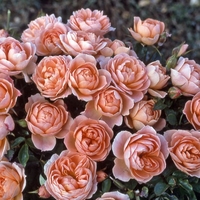
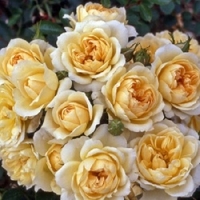
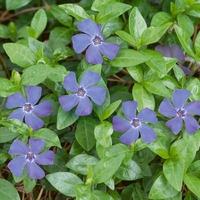
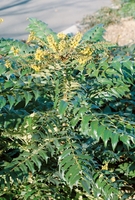
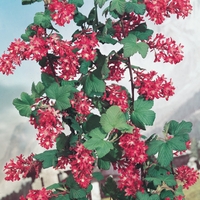

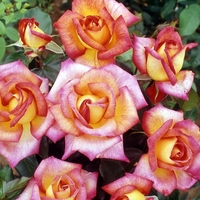

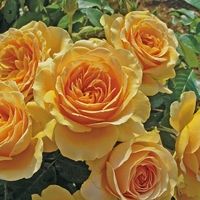
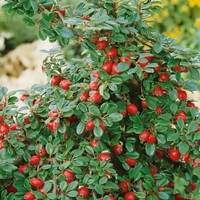
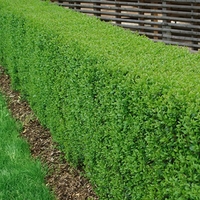
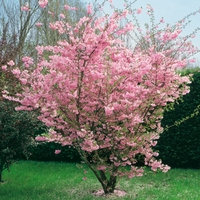


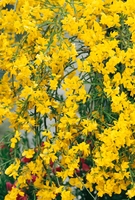
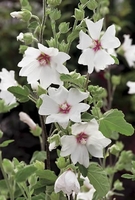
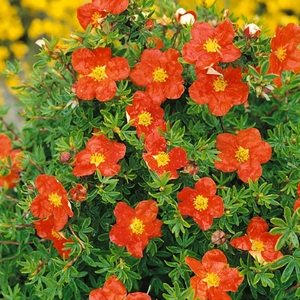

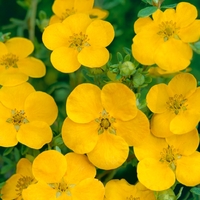
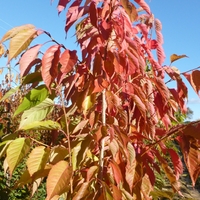
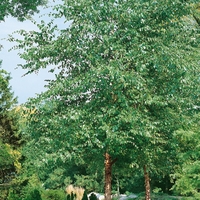
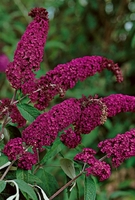
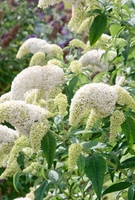

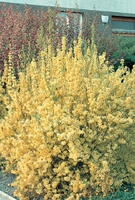
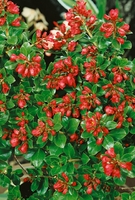
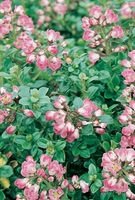


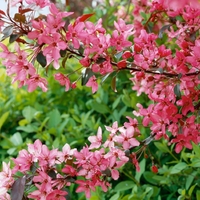
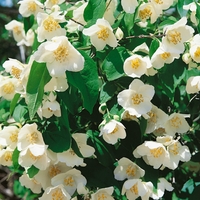
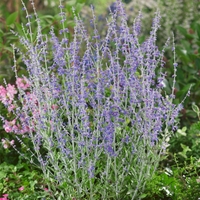
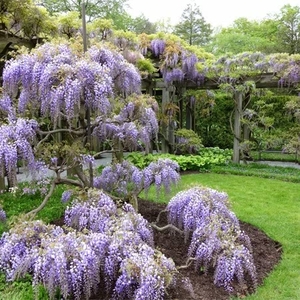
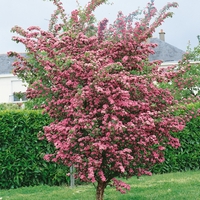
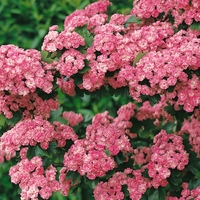
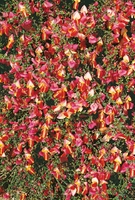
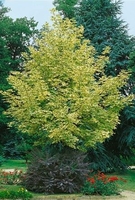
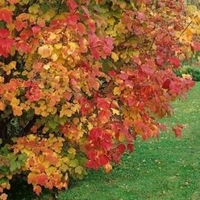
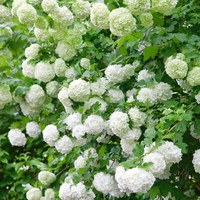
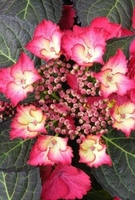
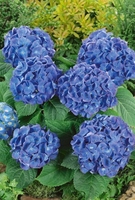
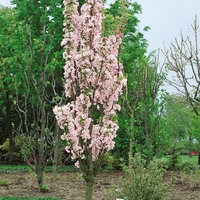


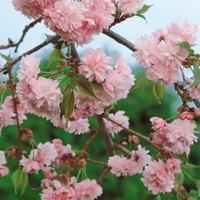

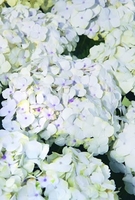
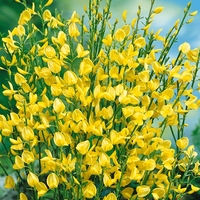
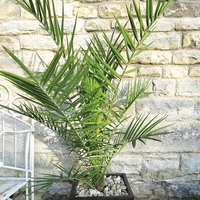
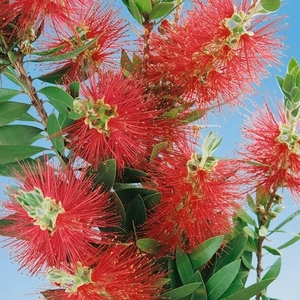
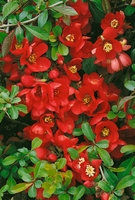
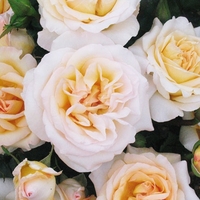
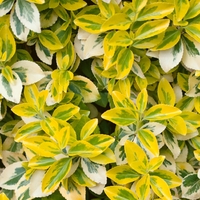
 Denmark
Denmark